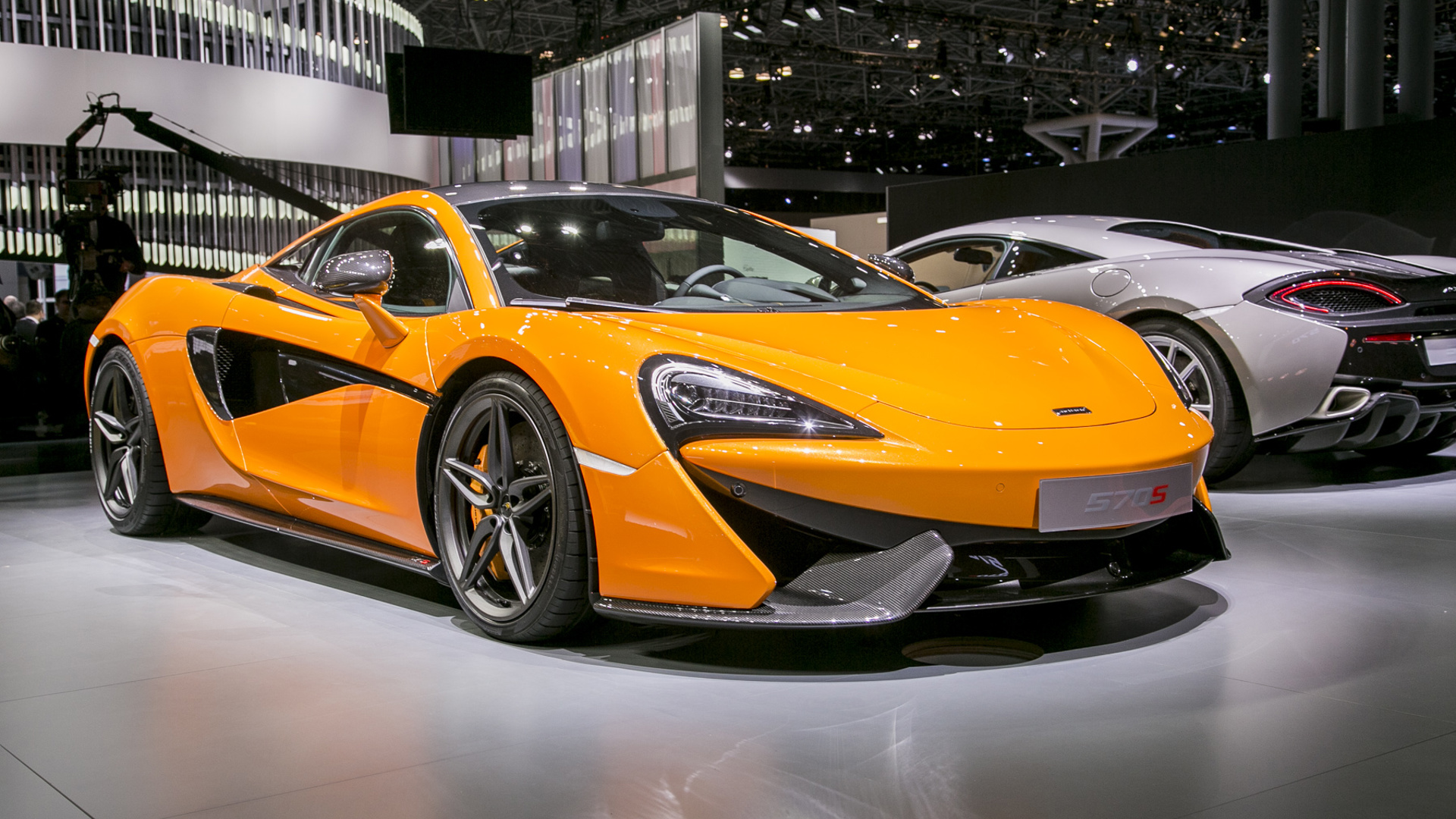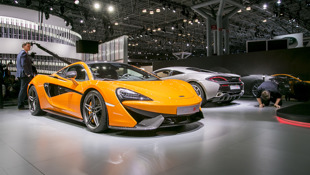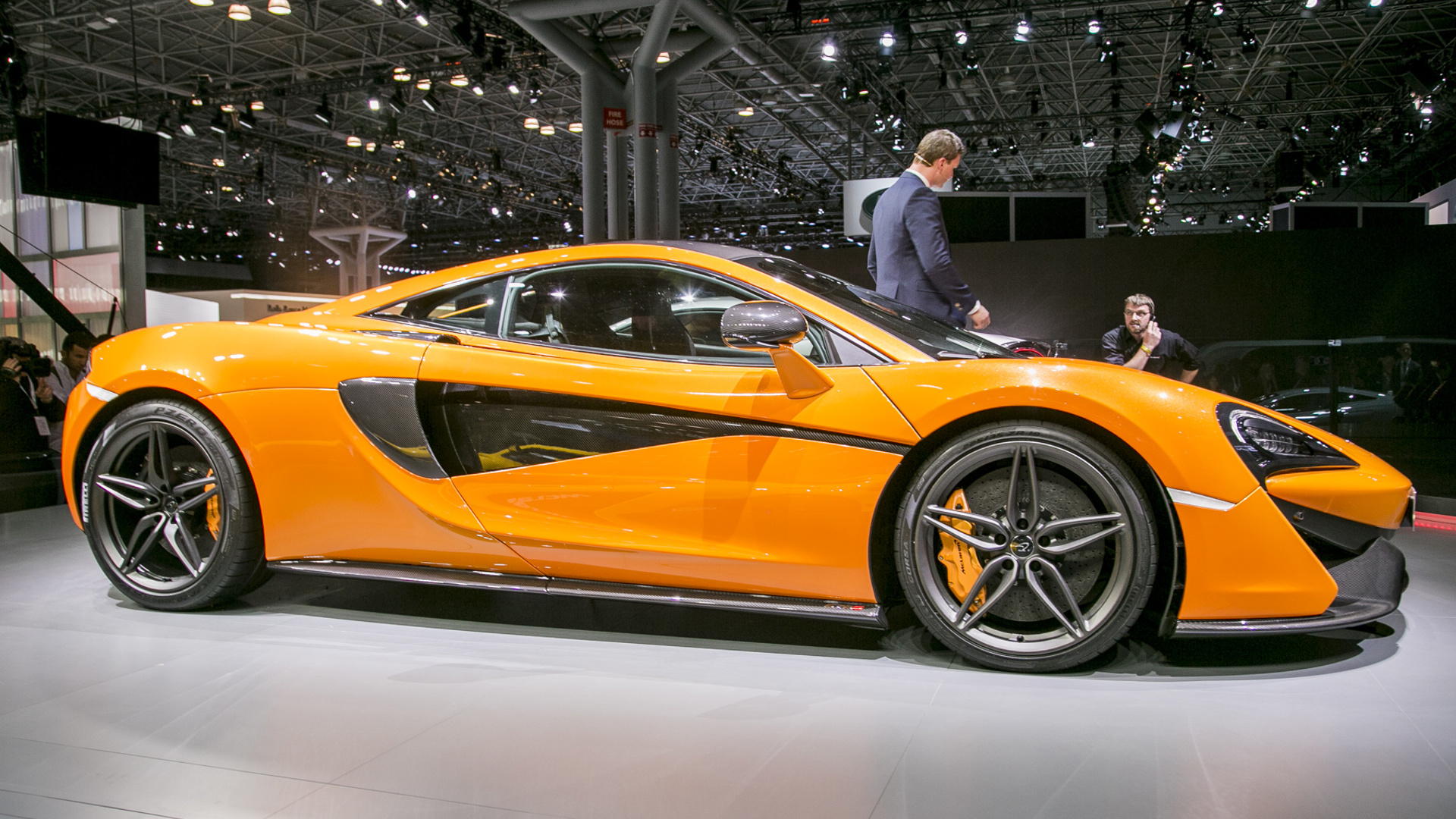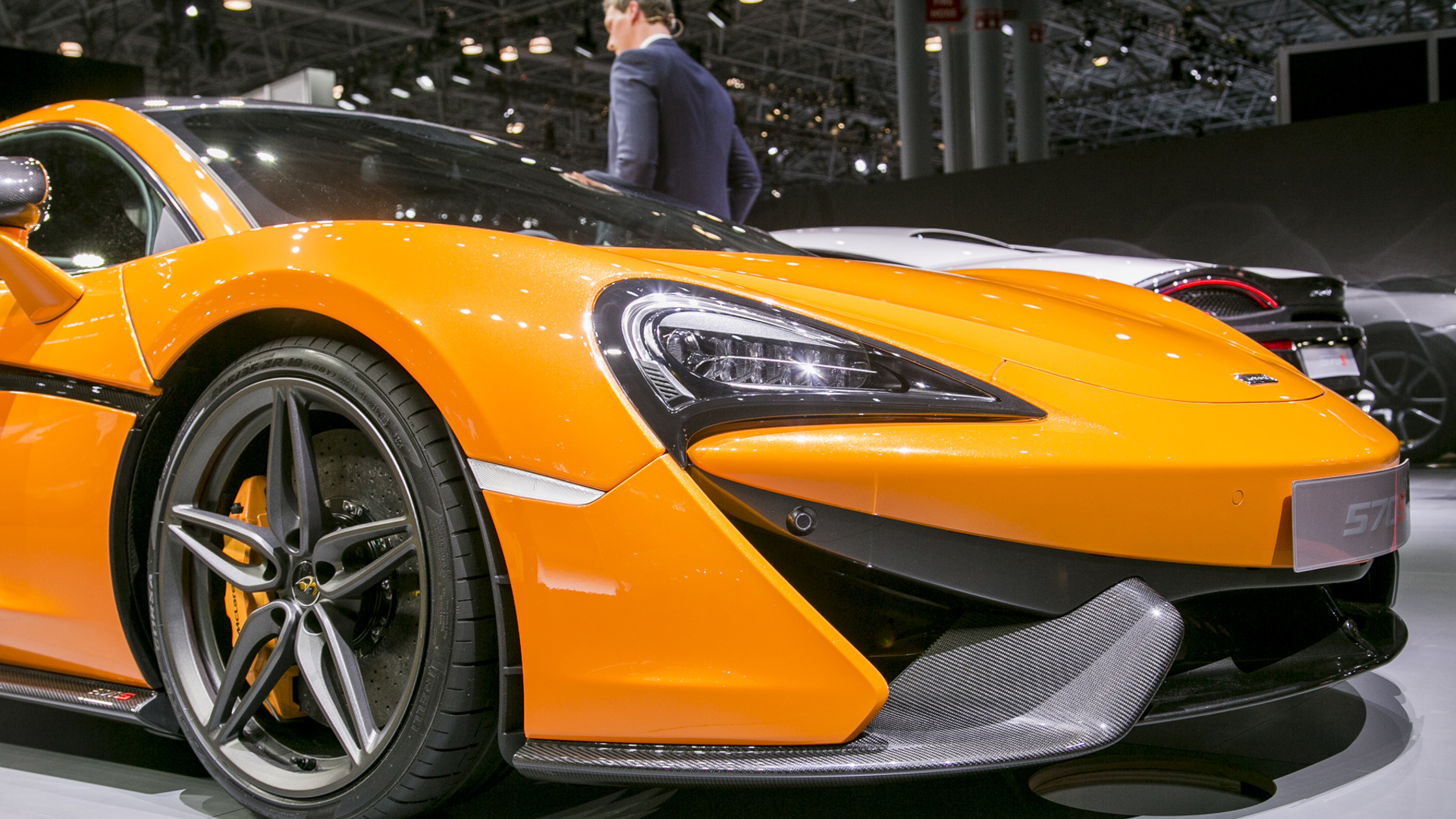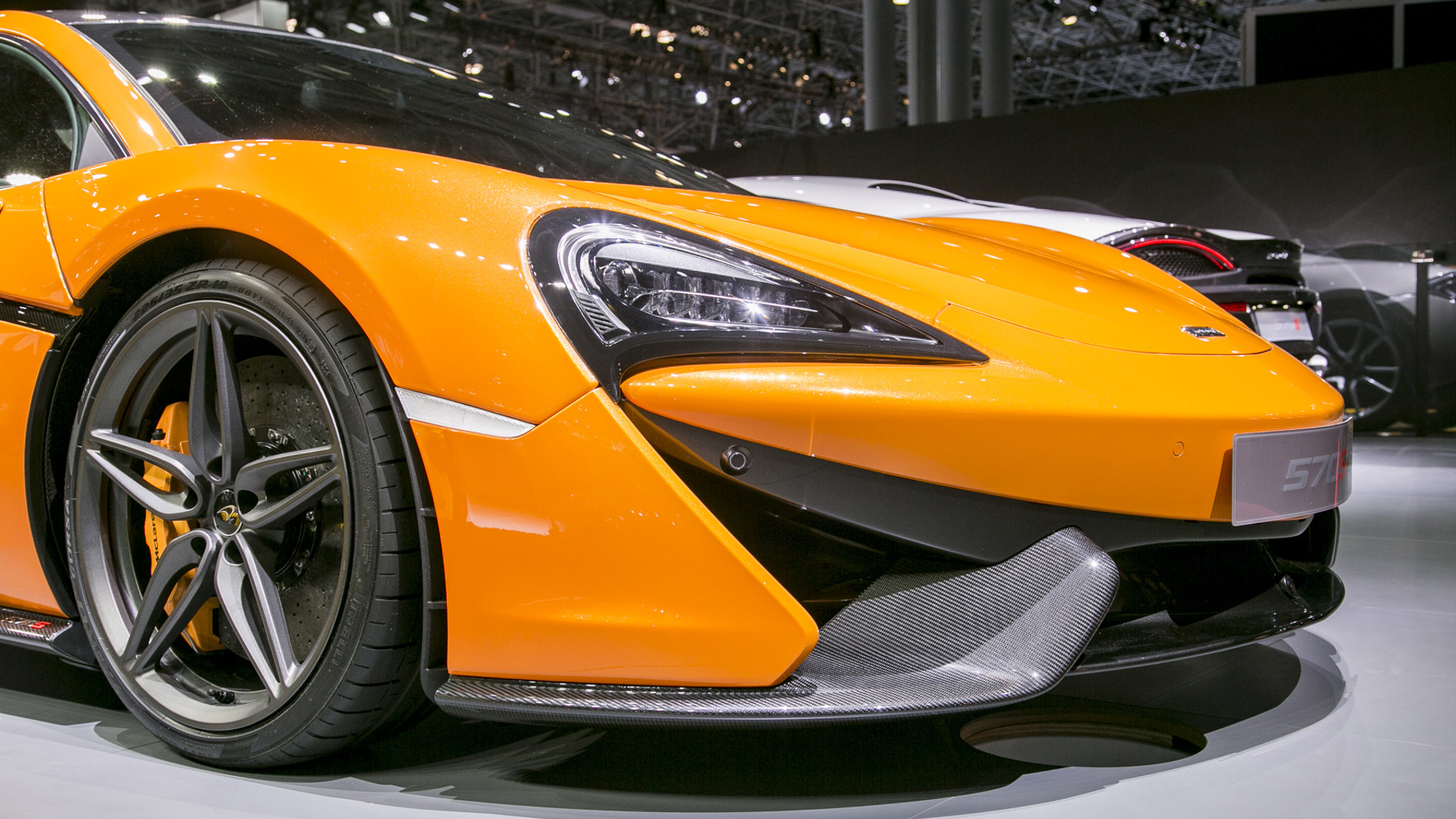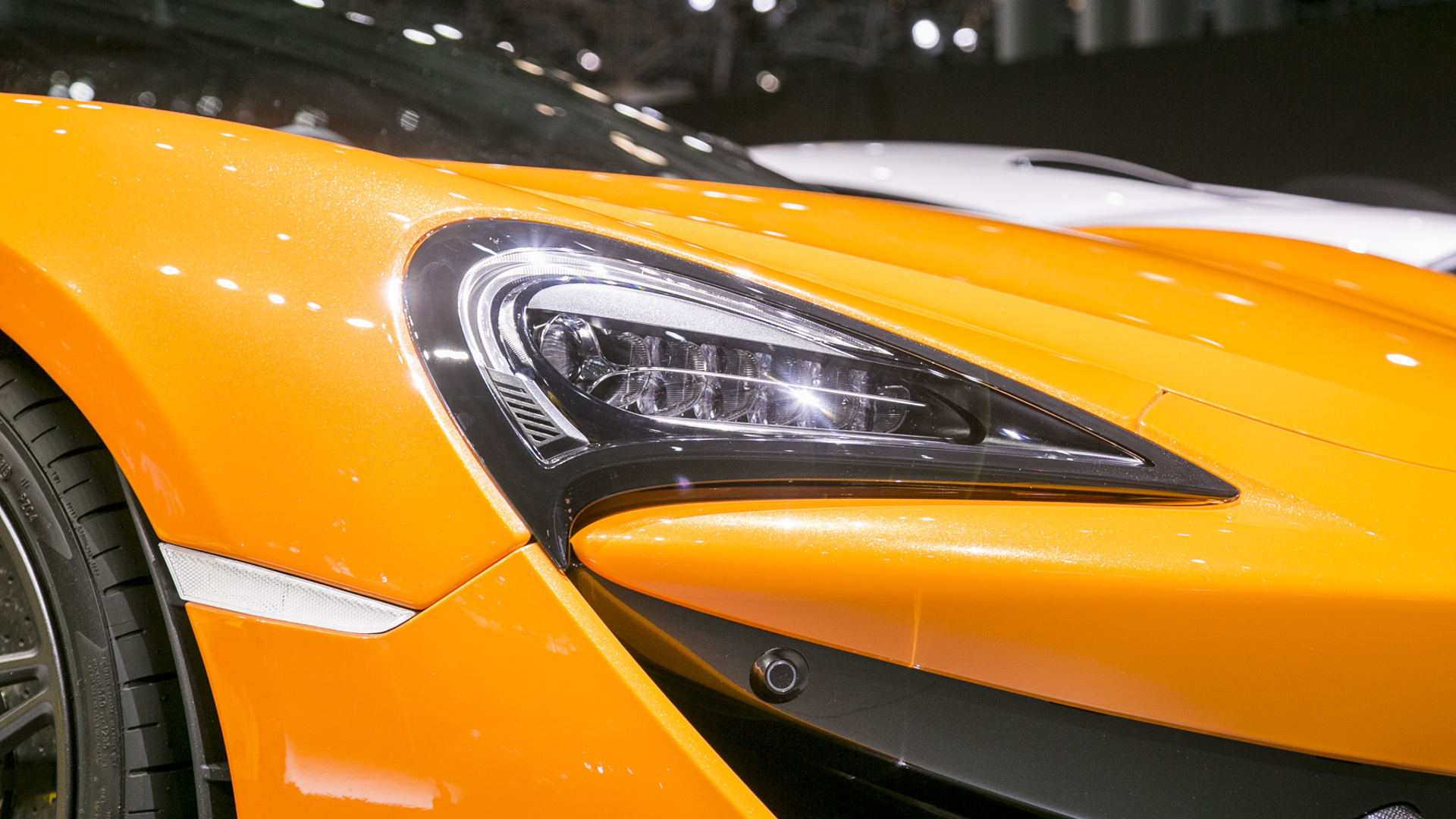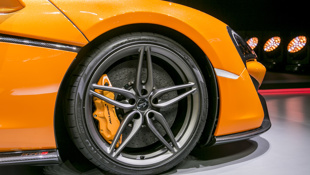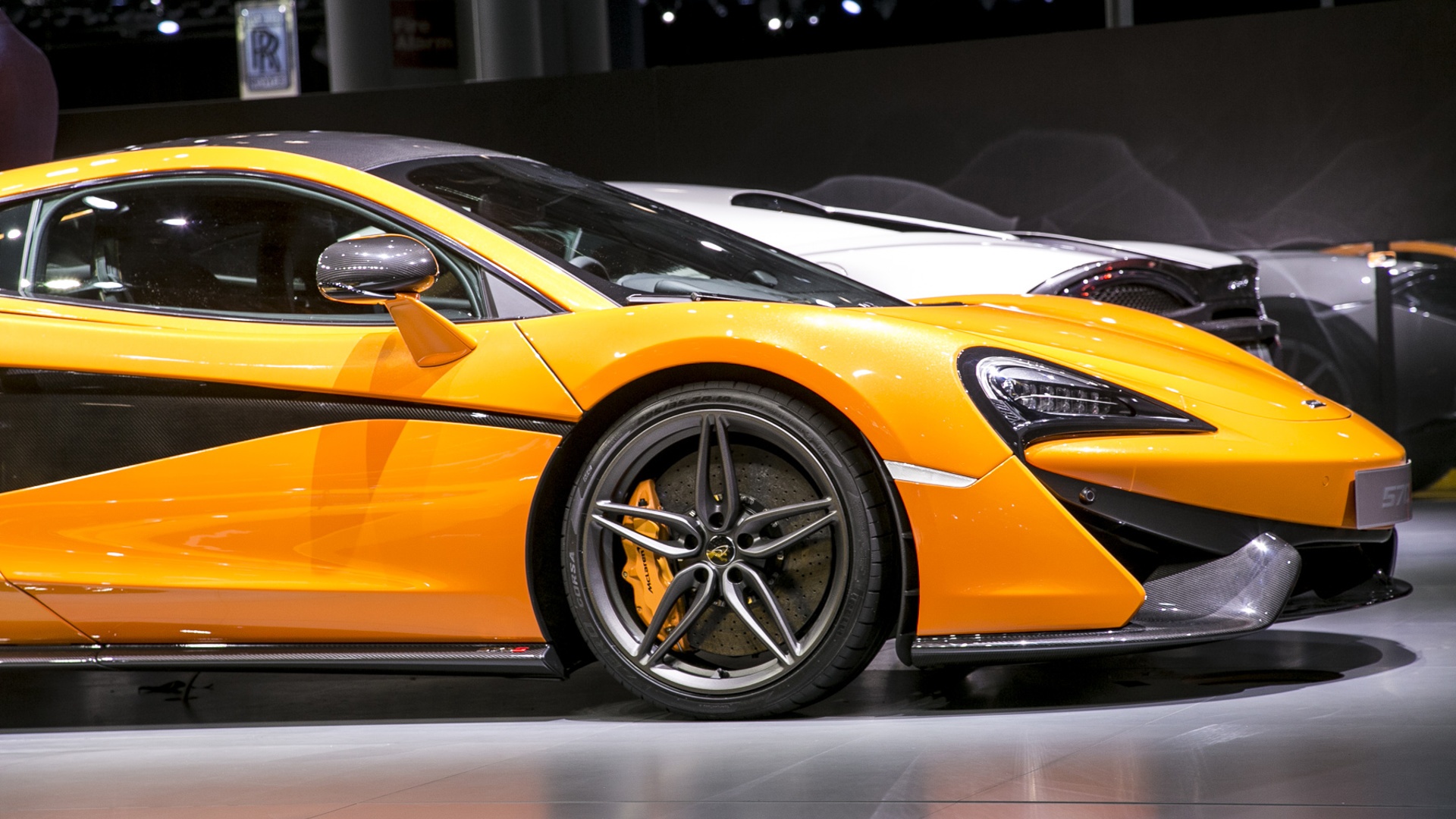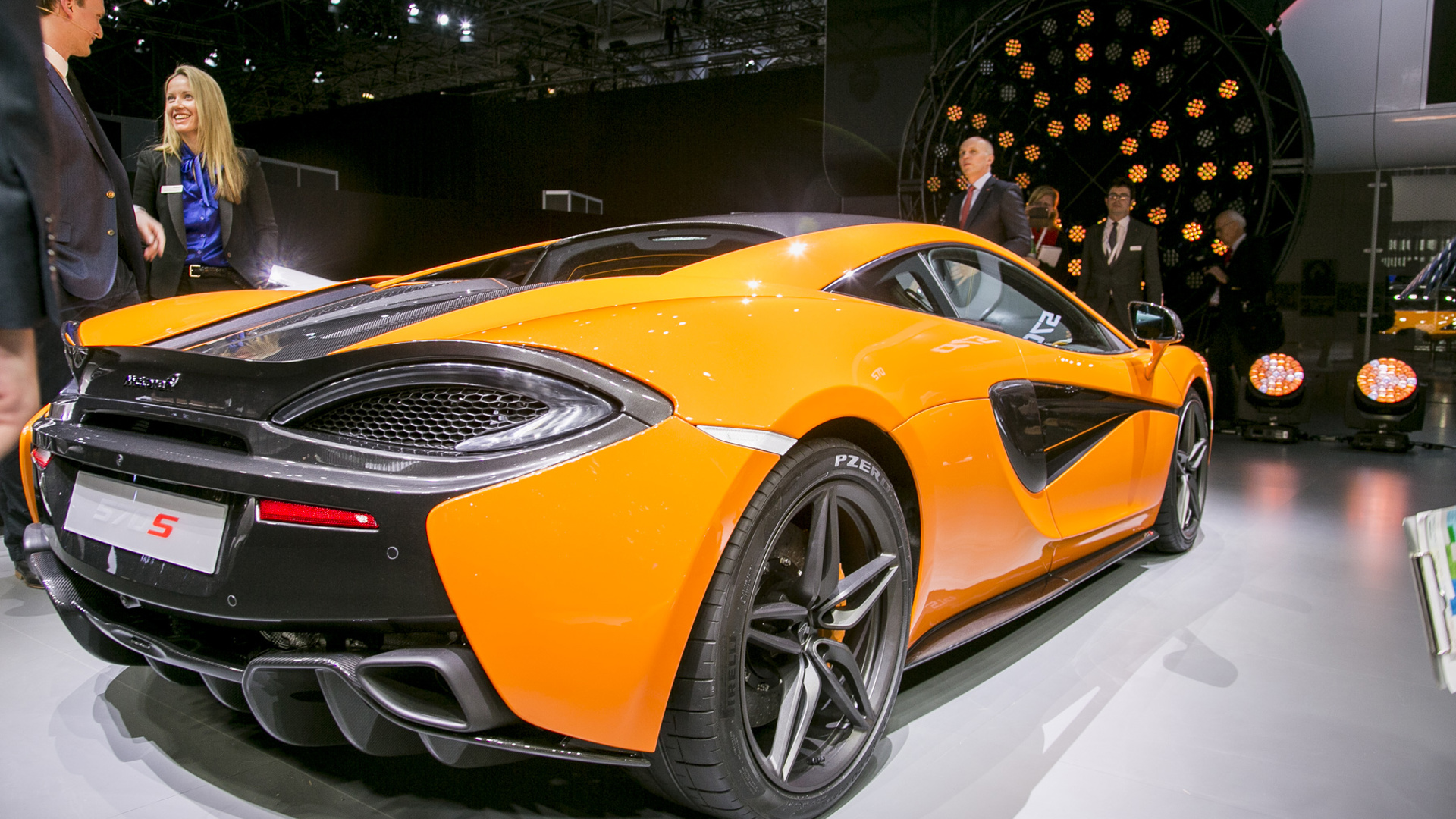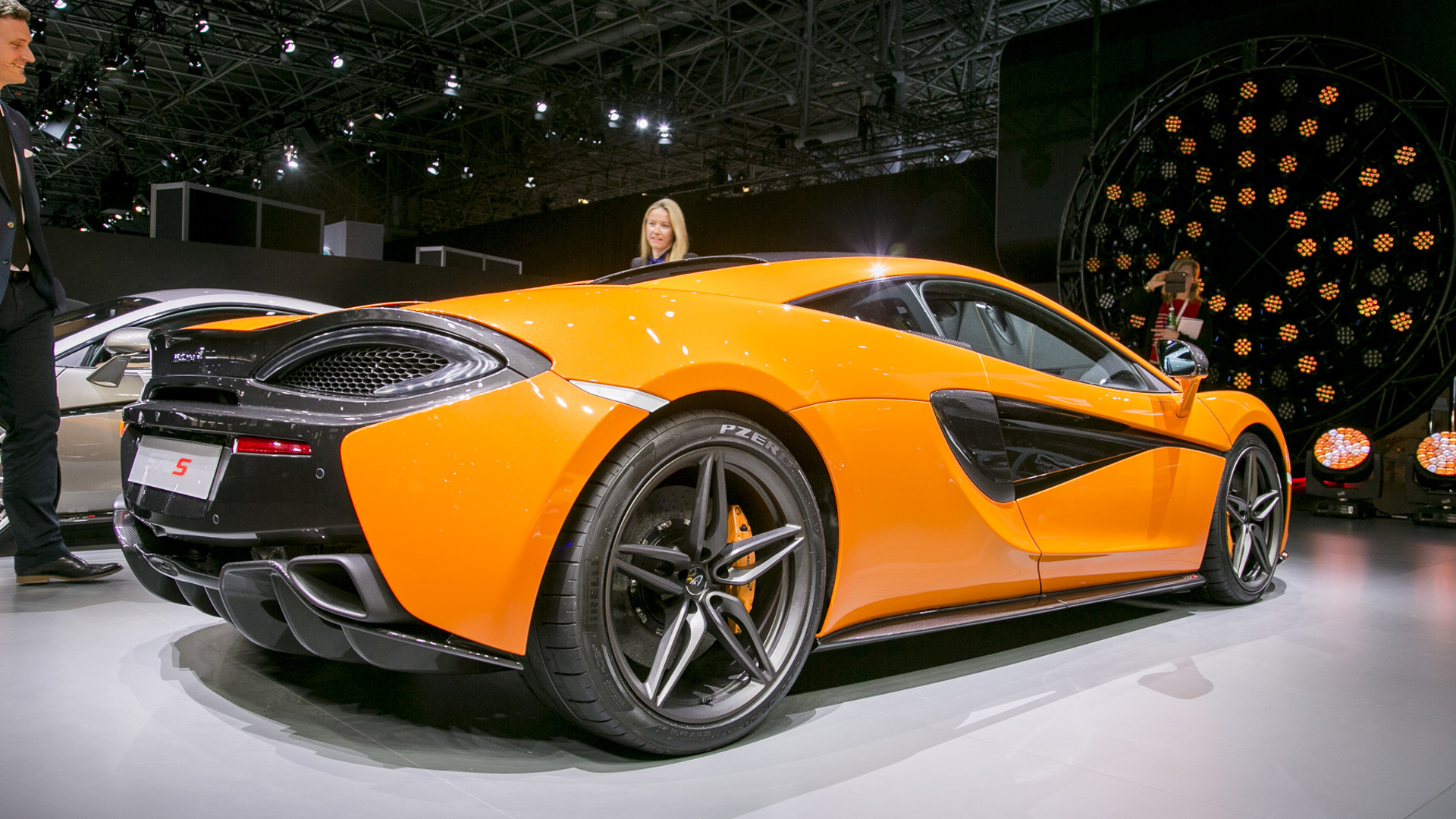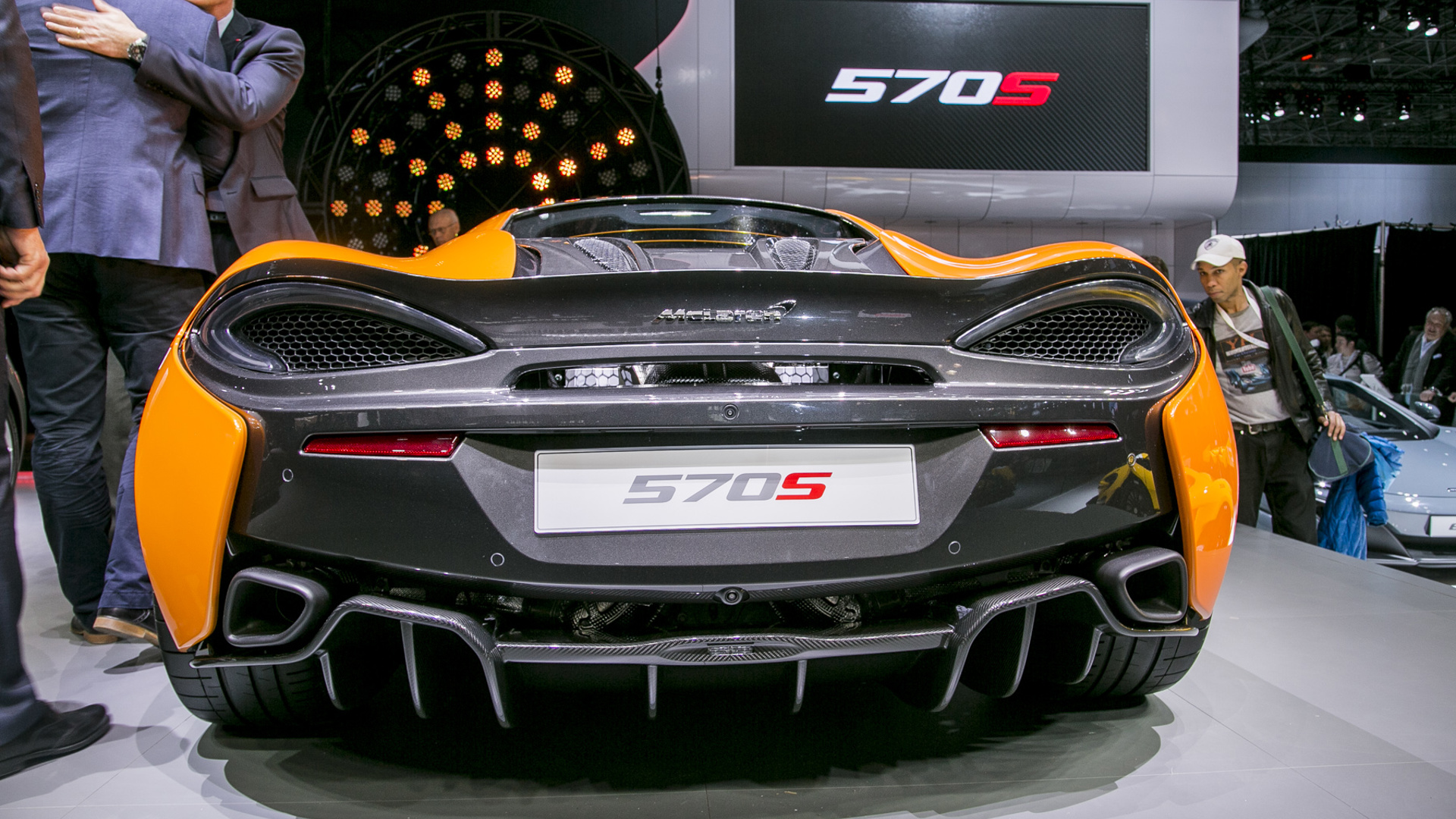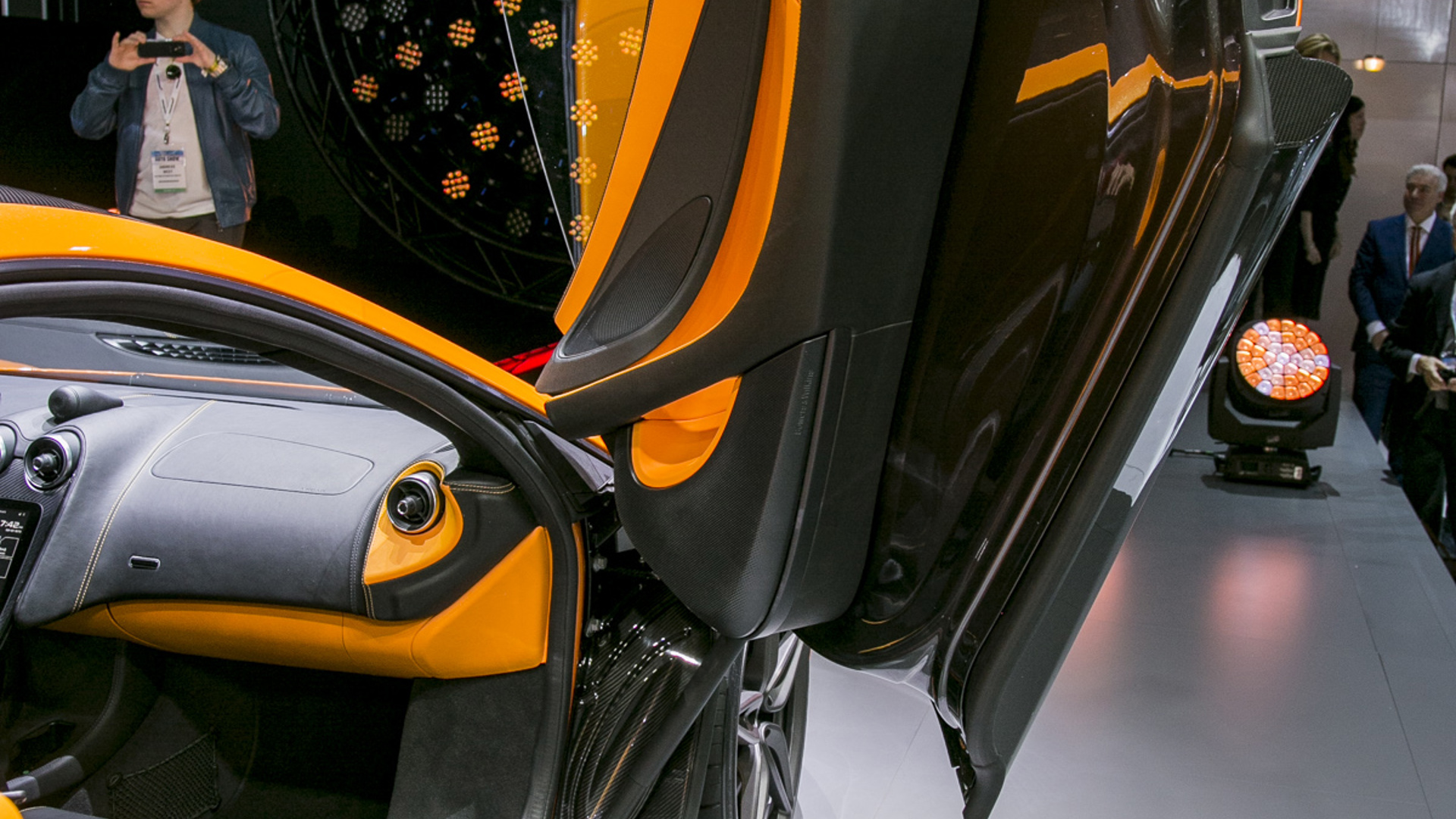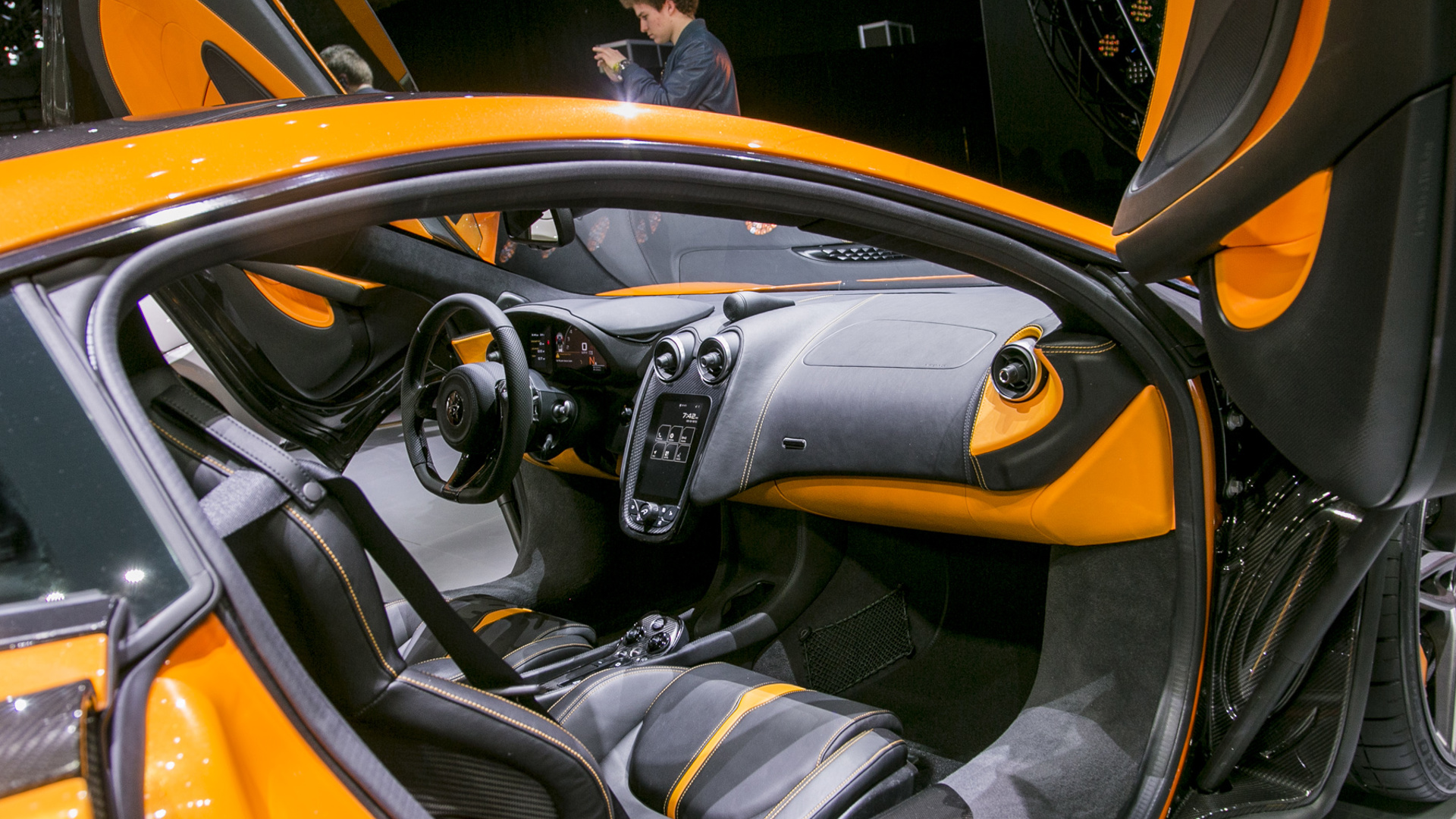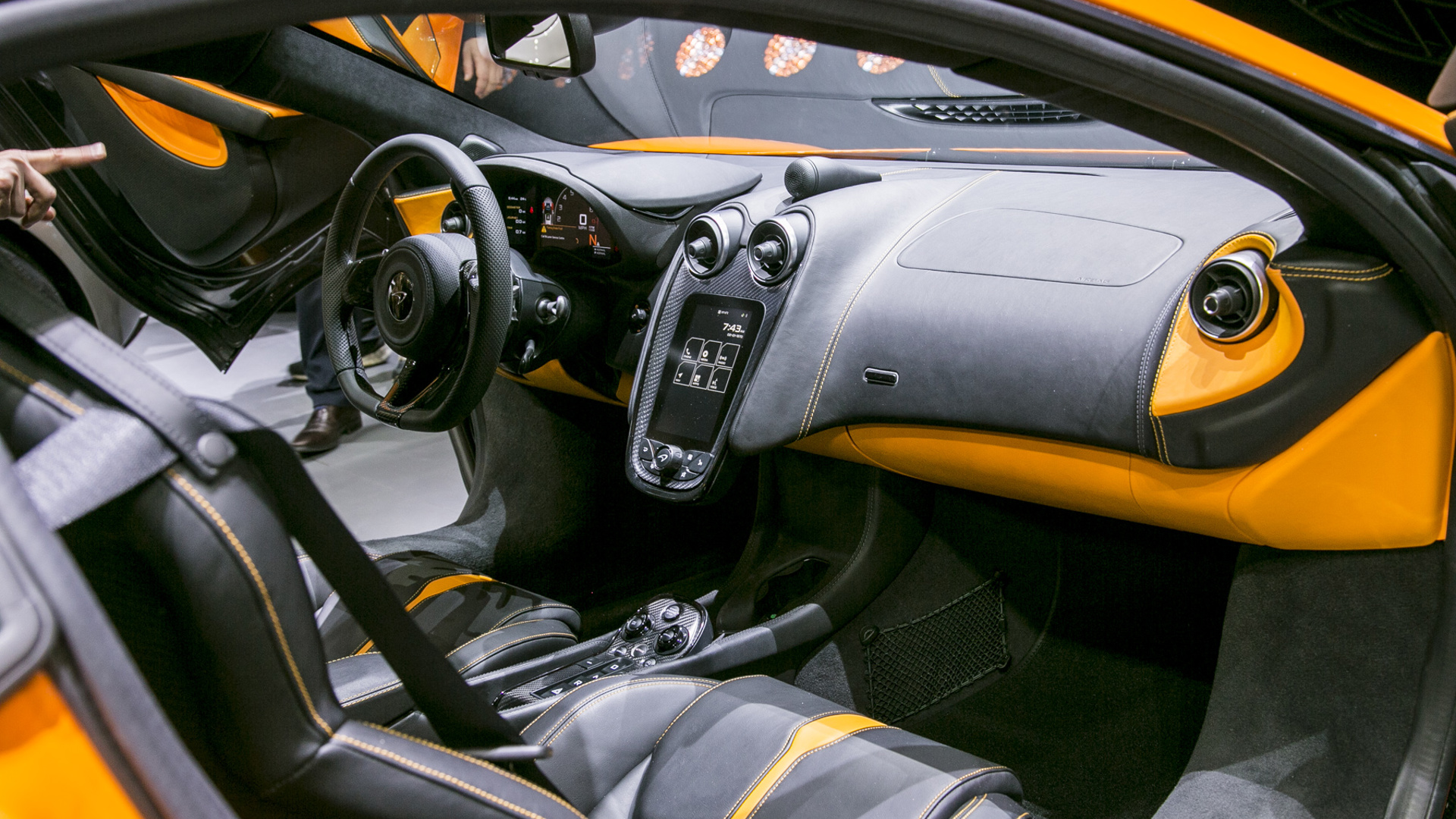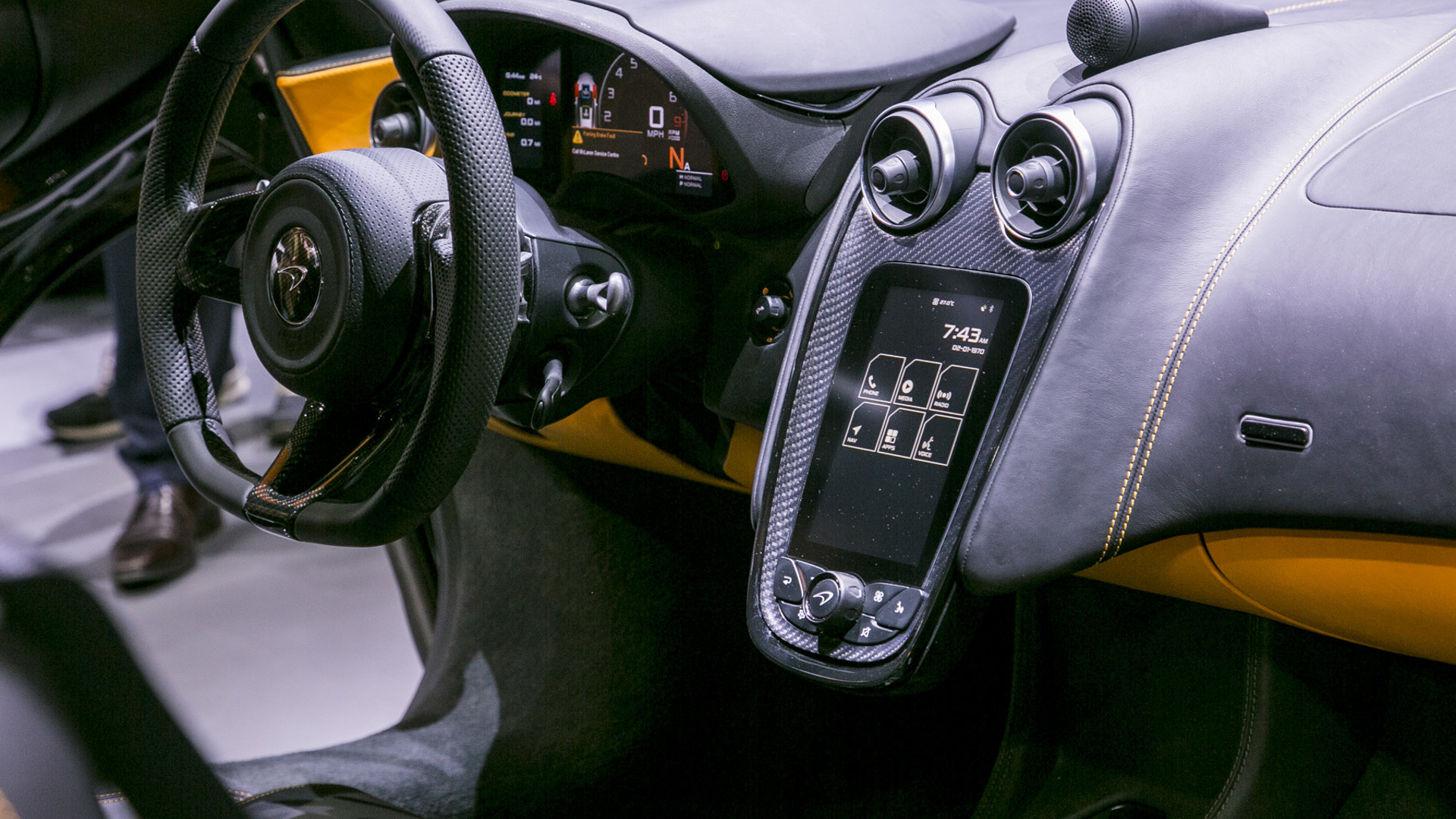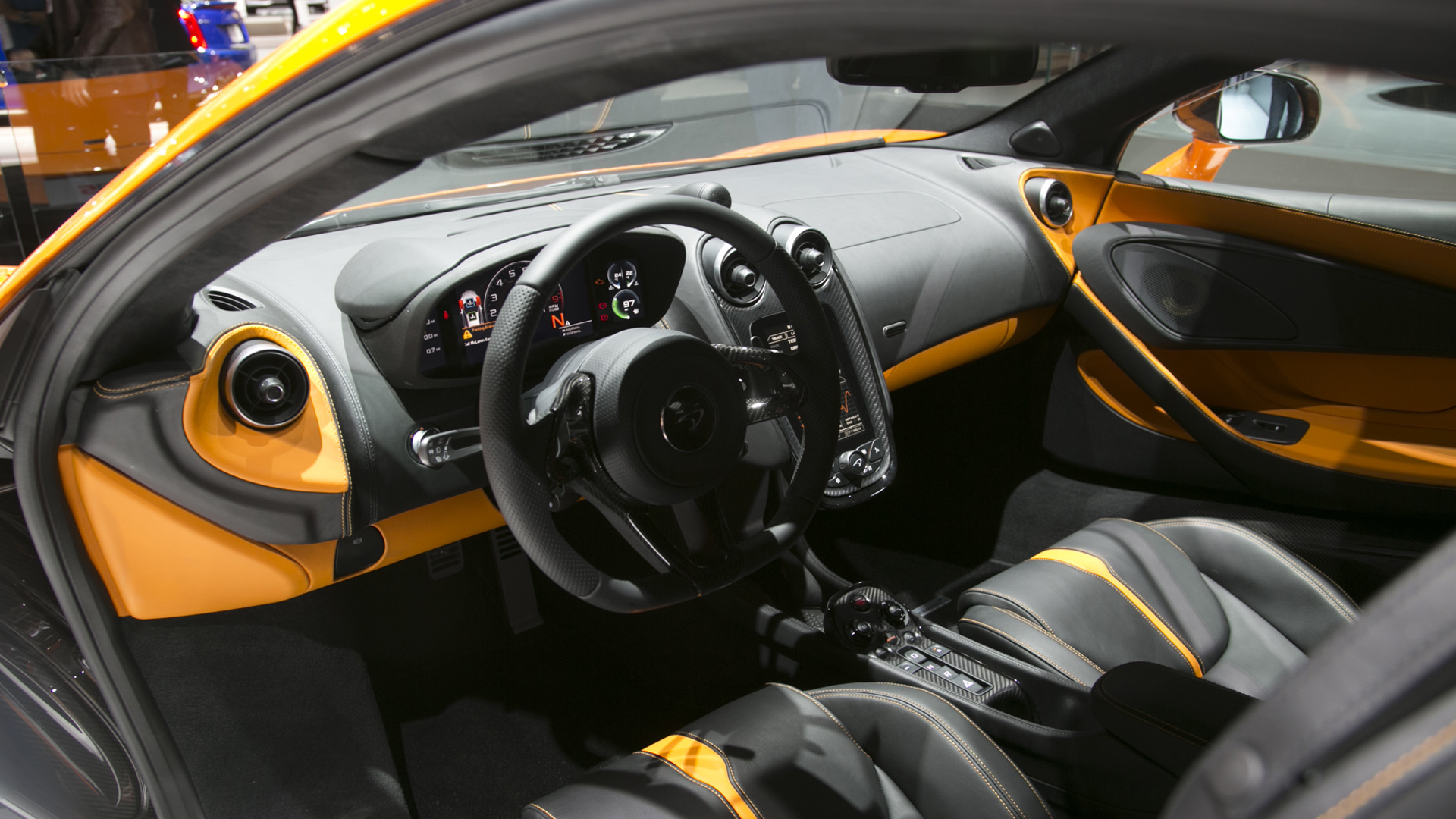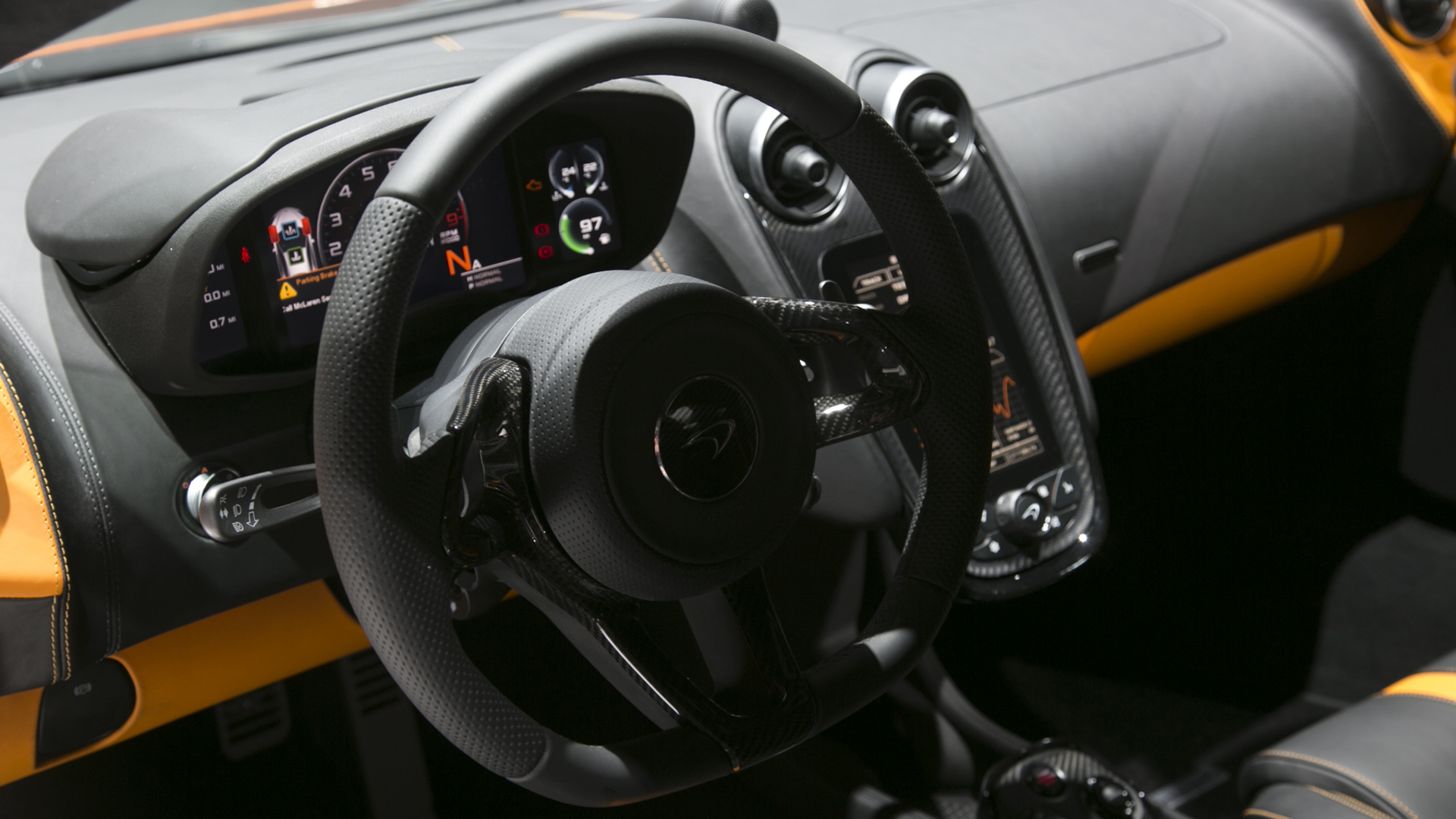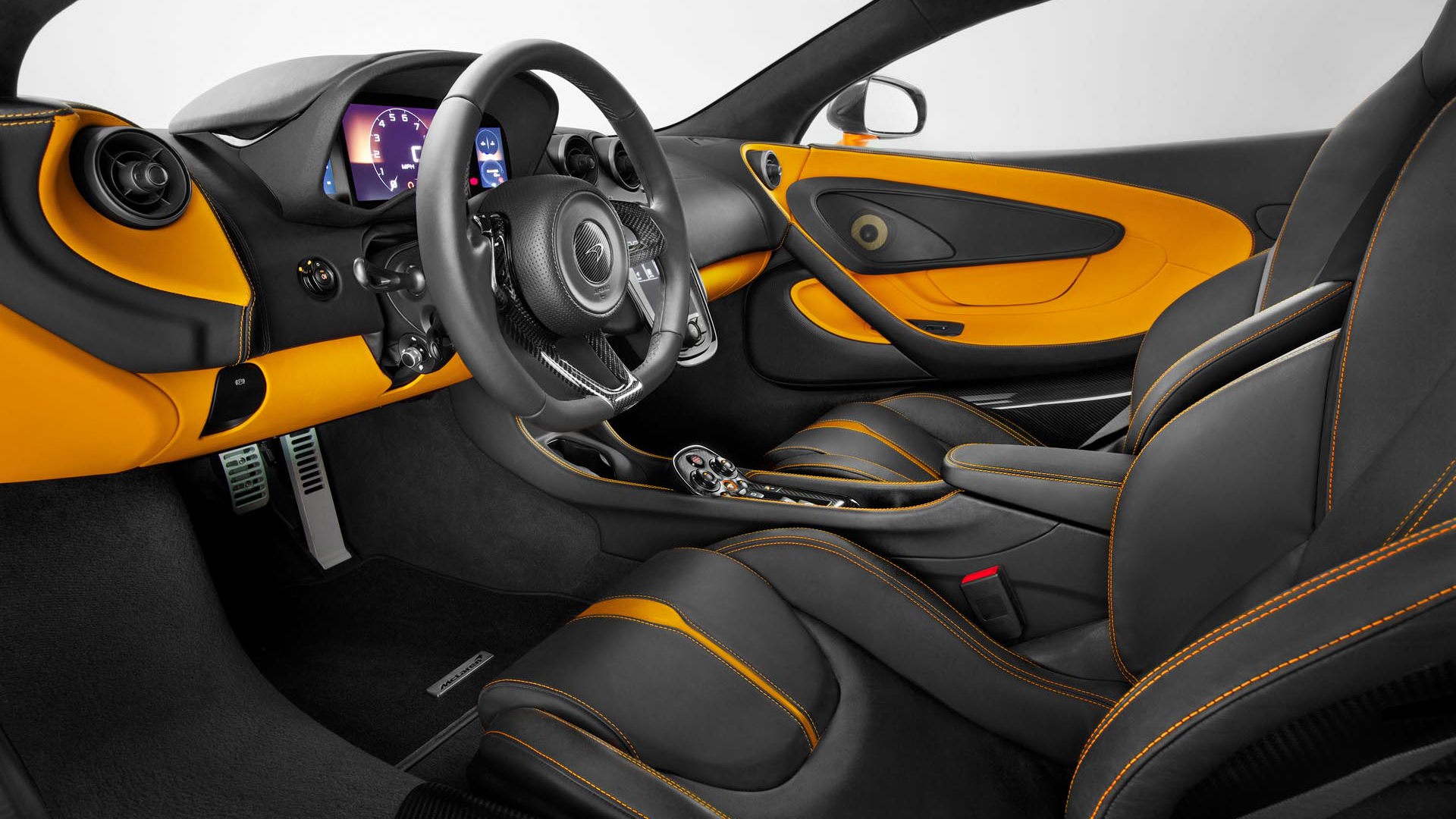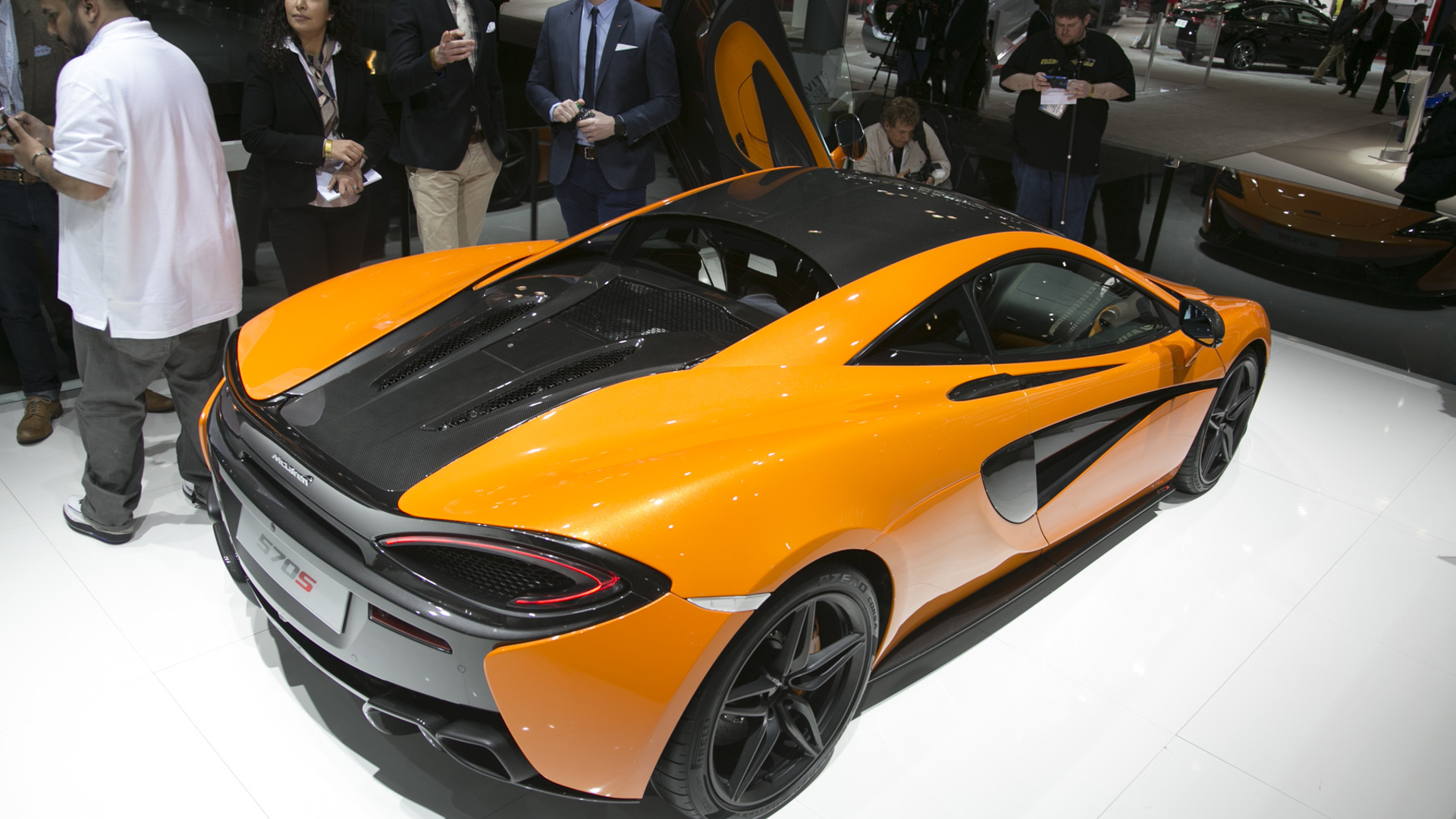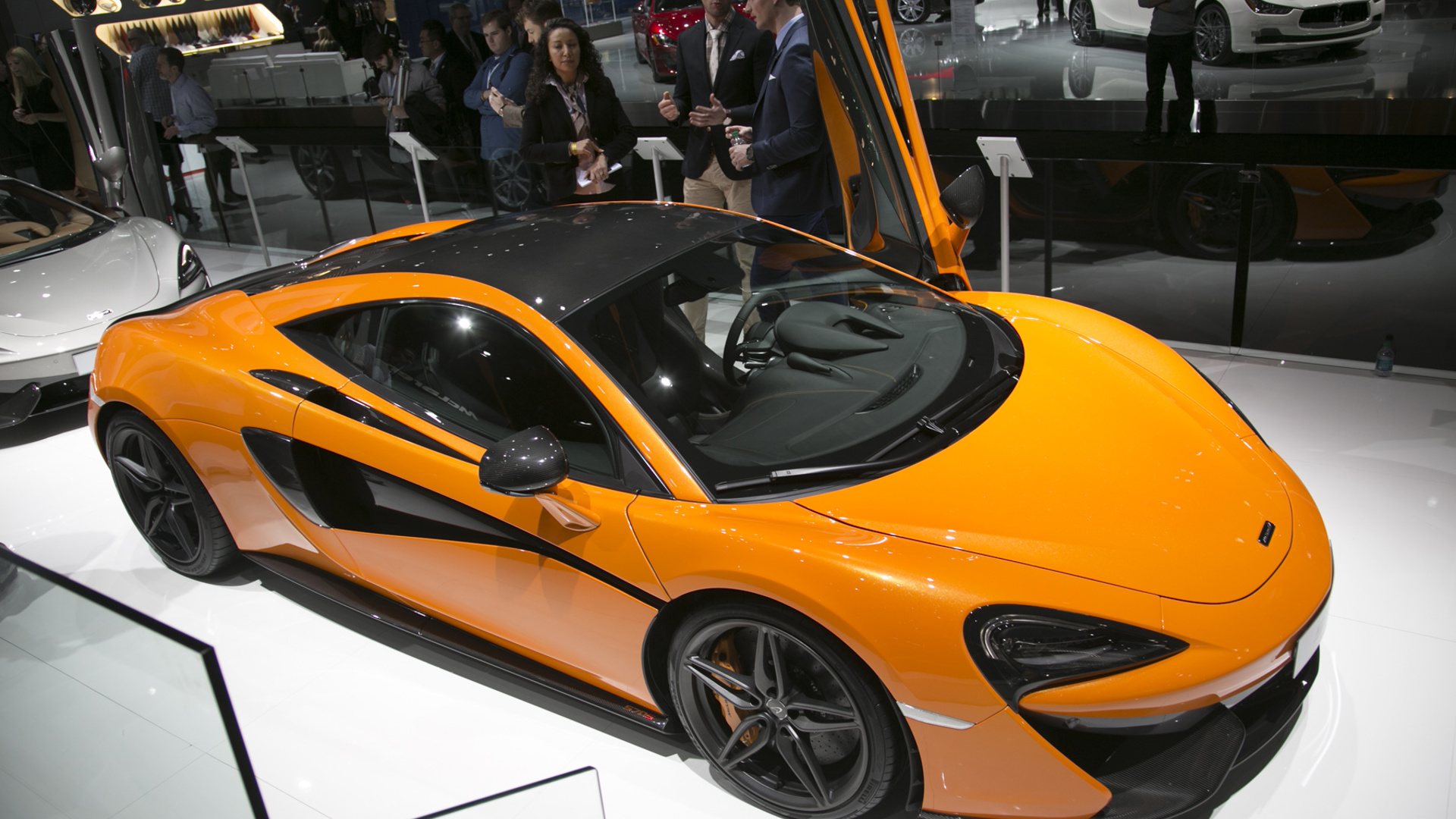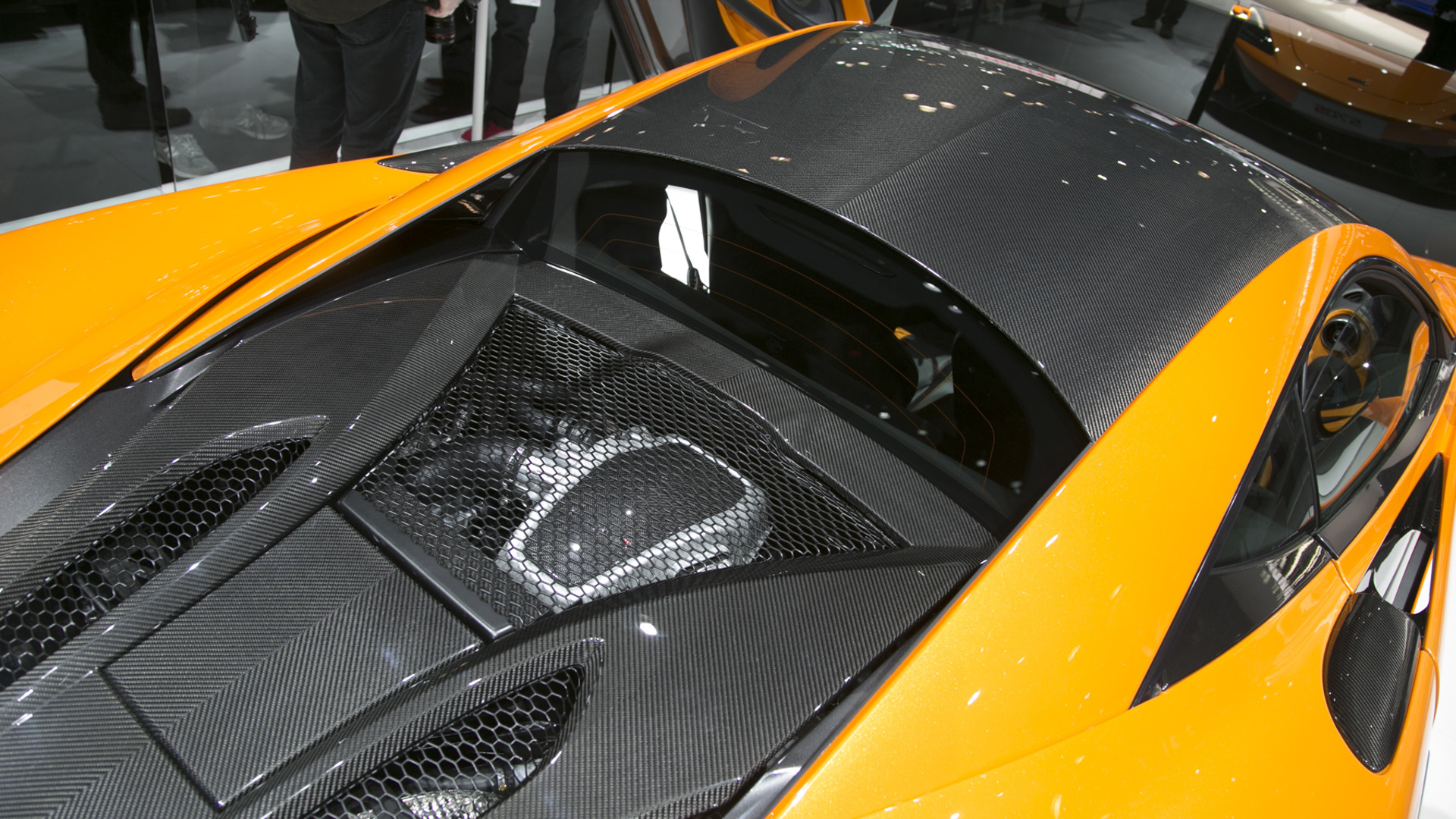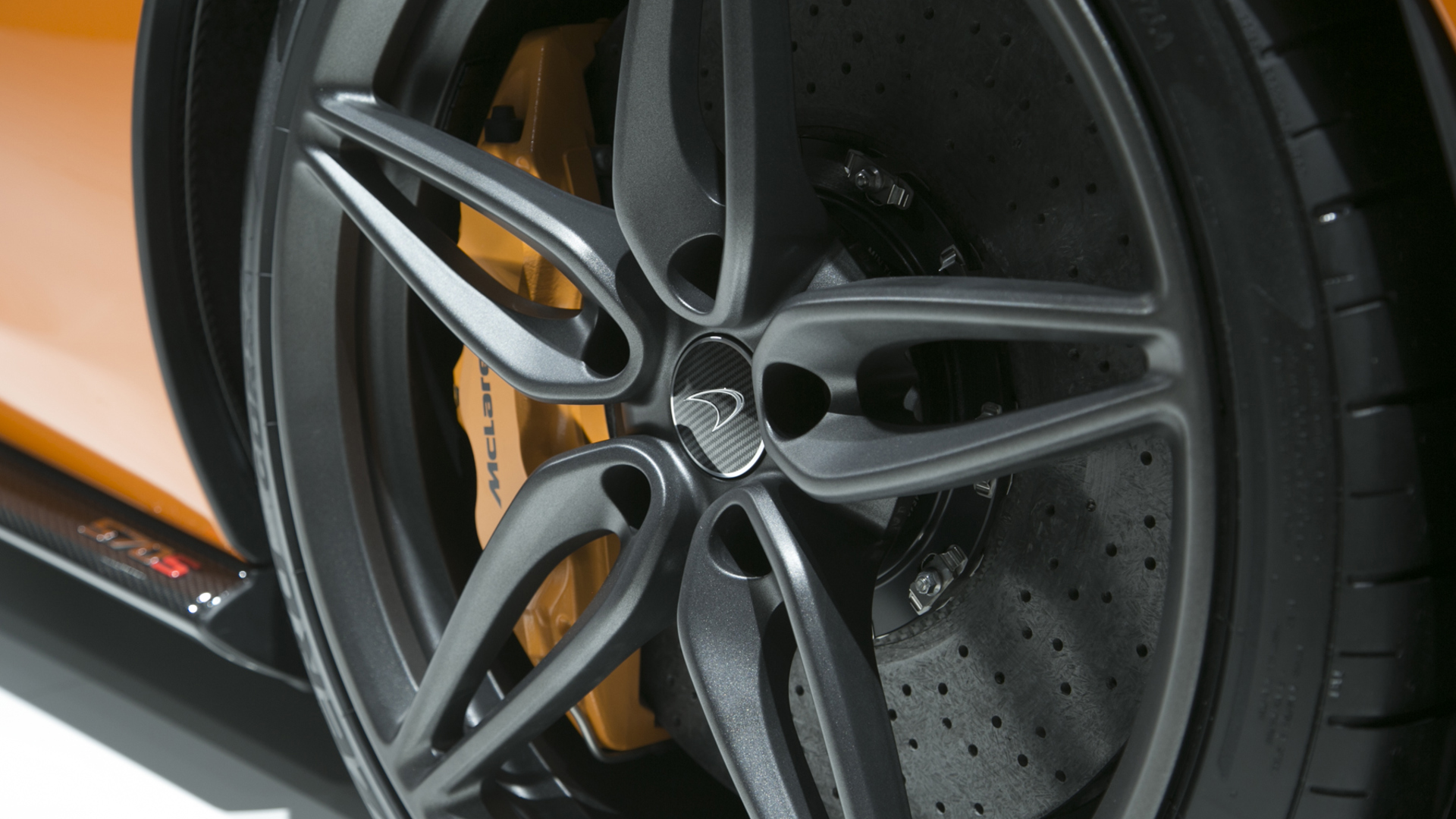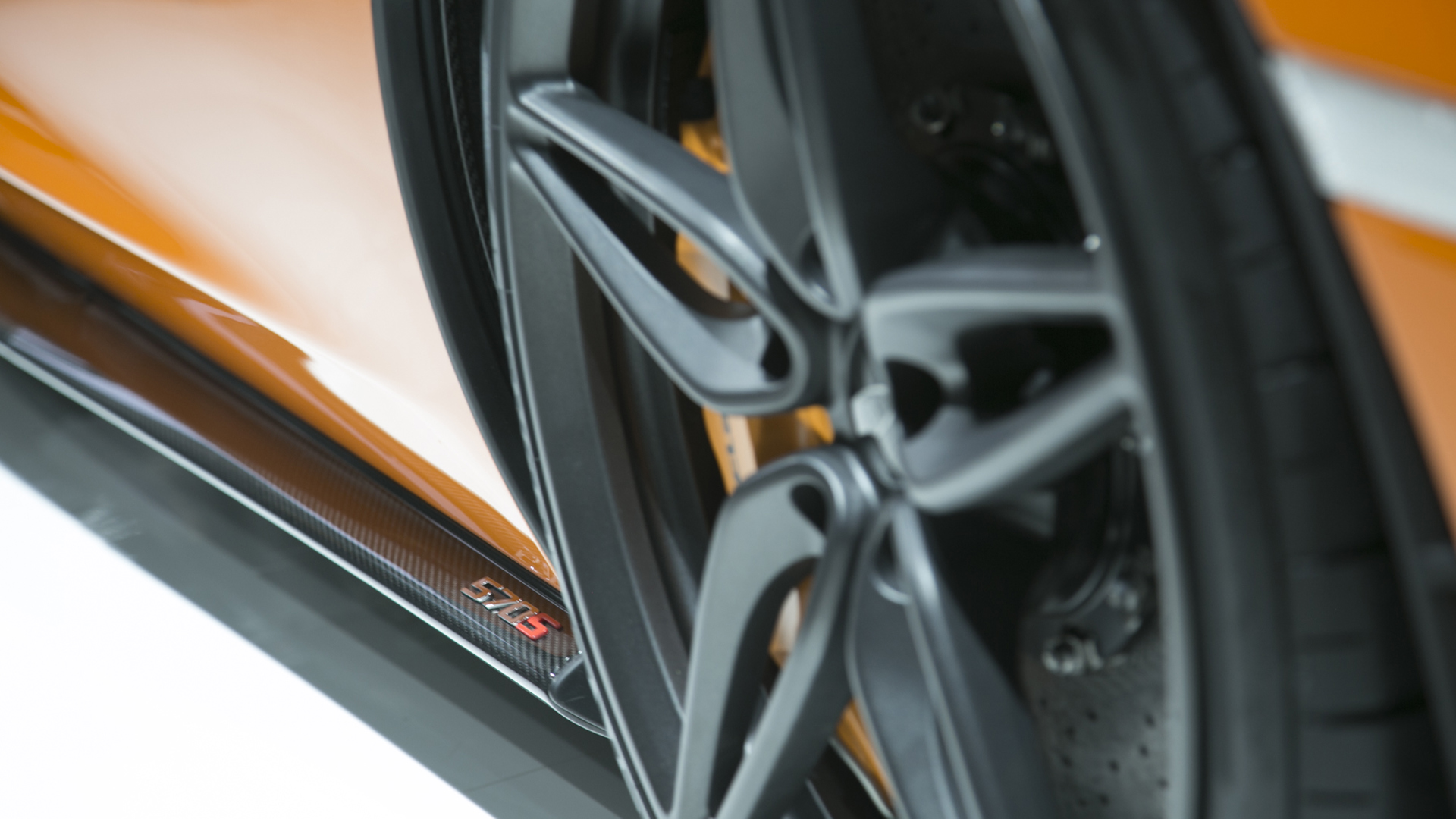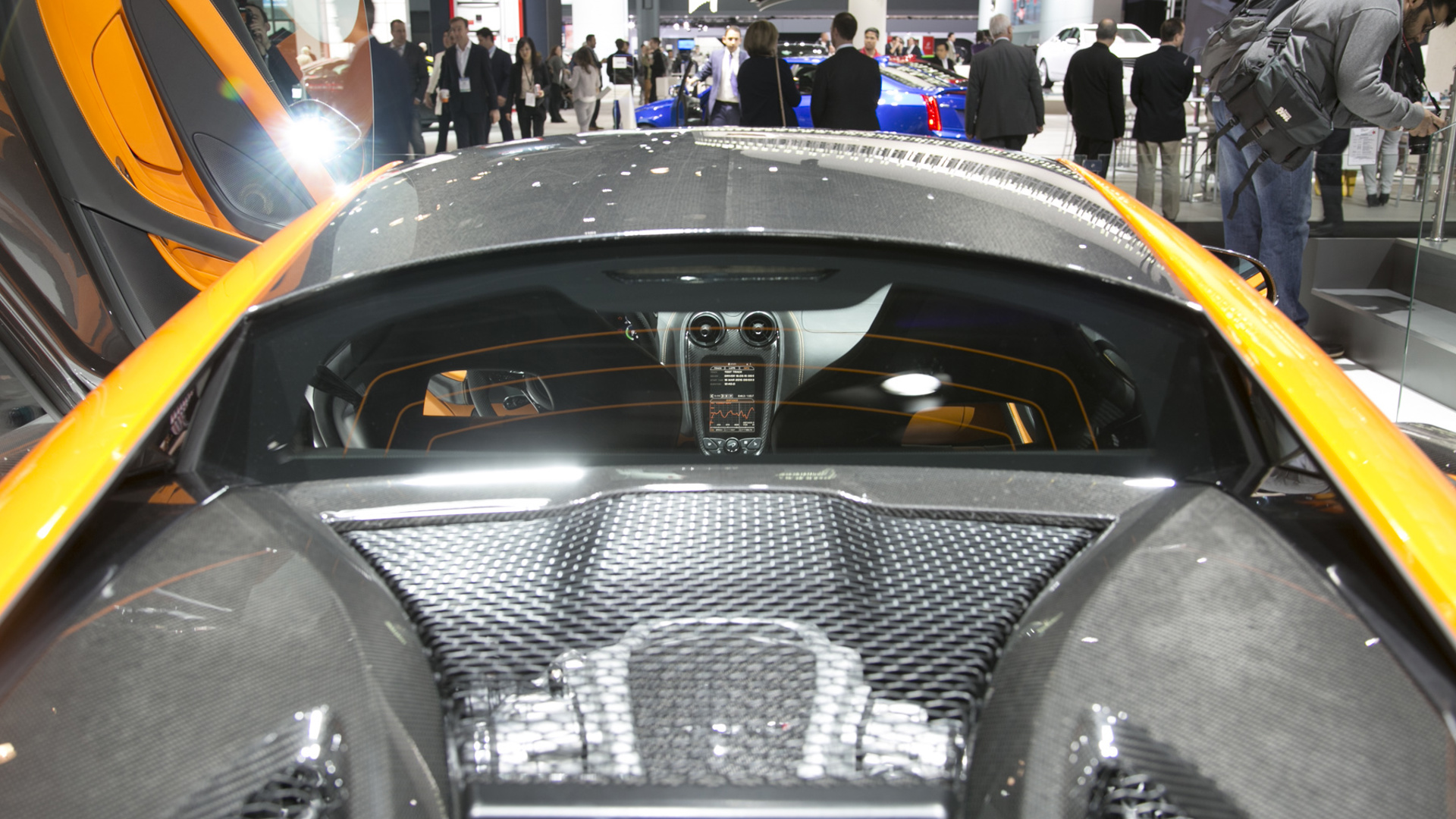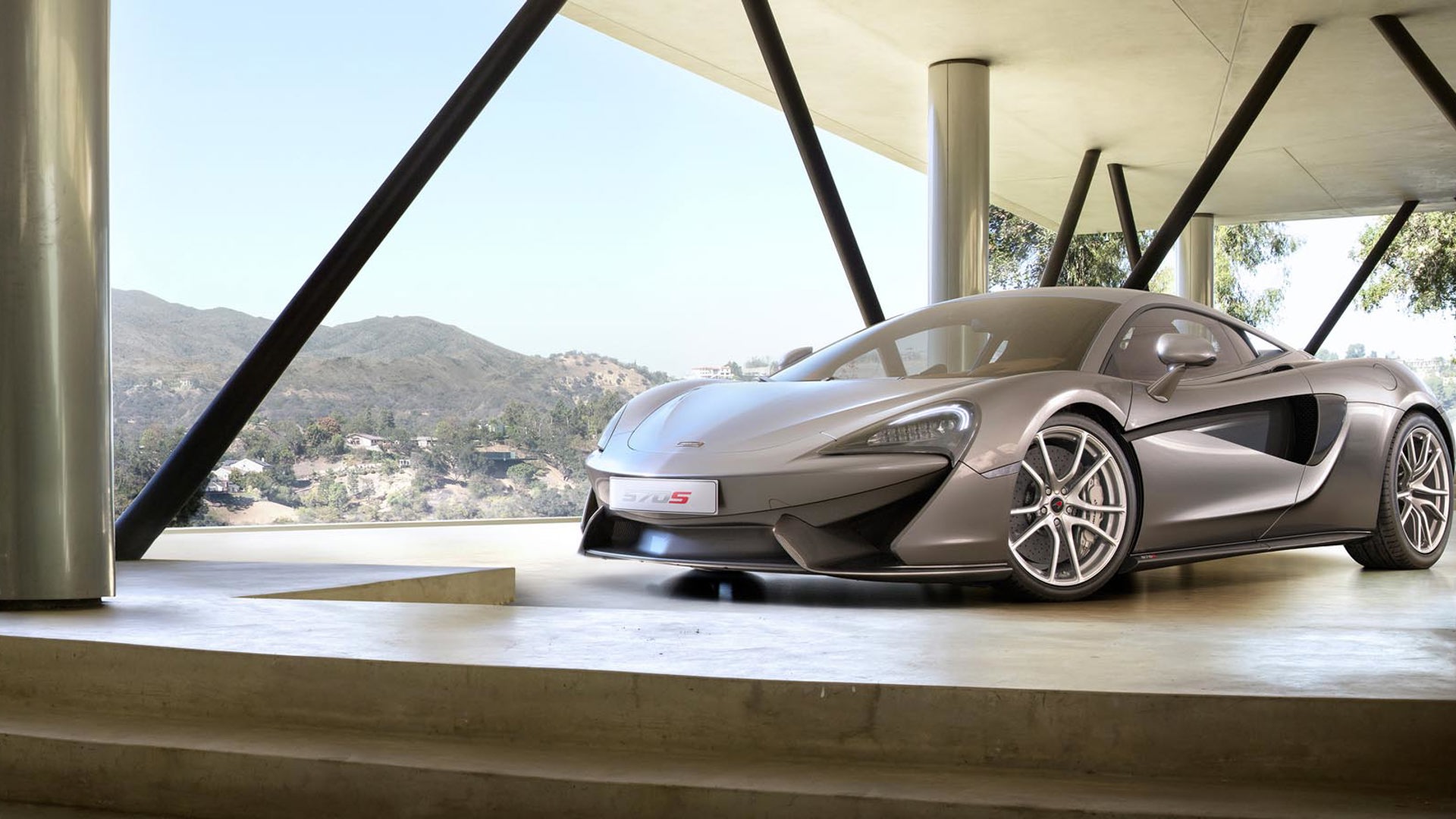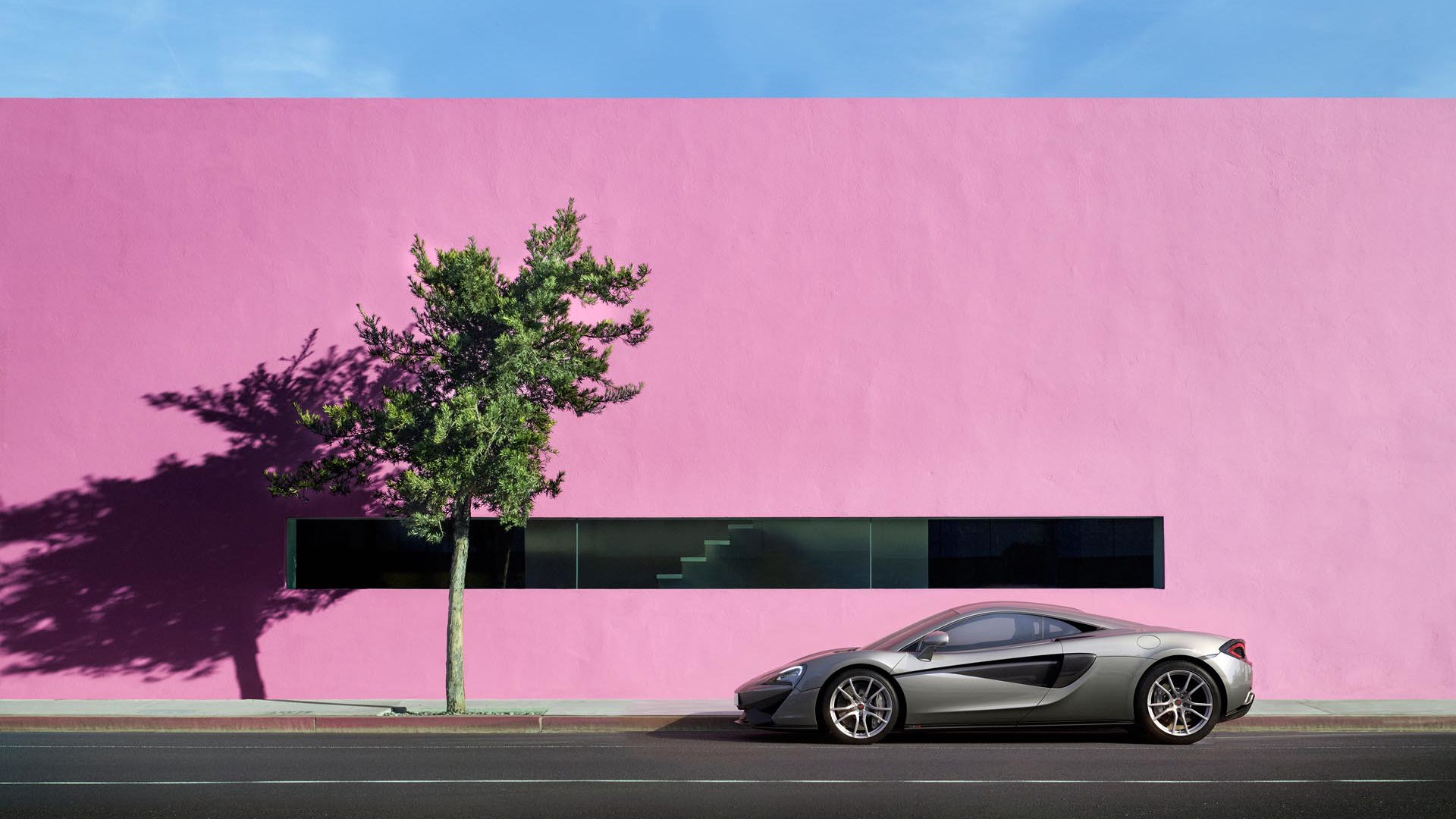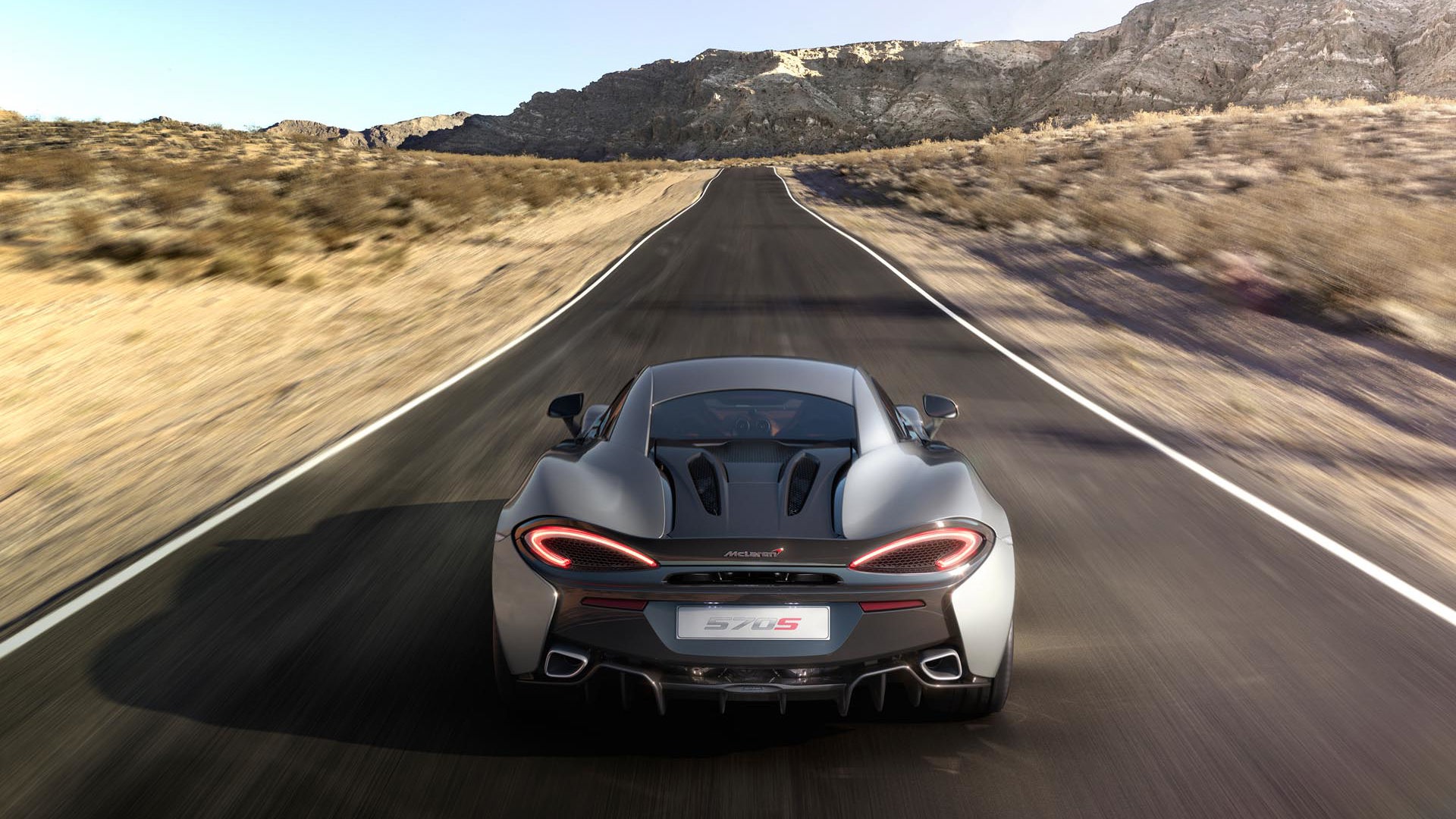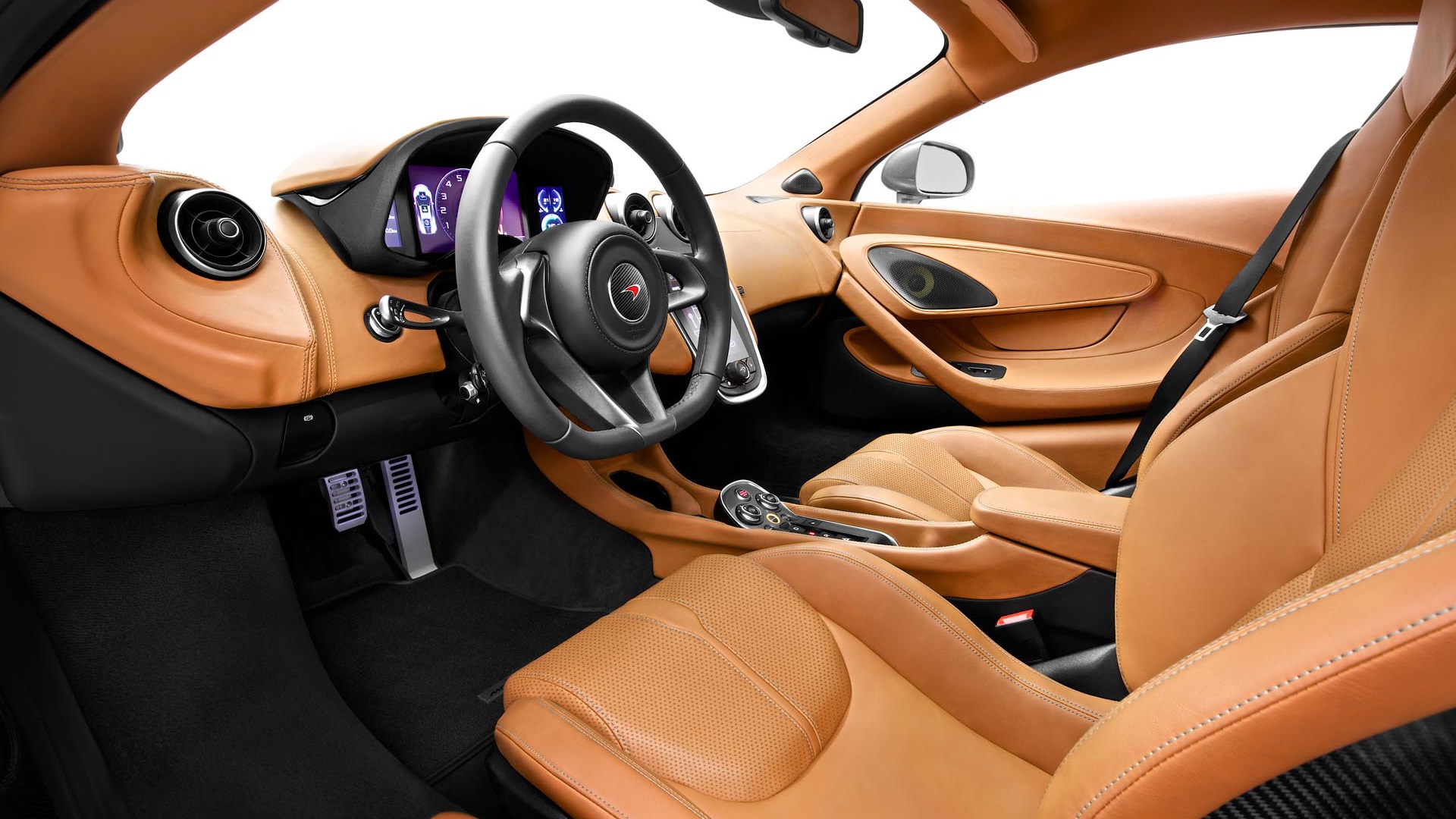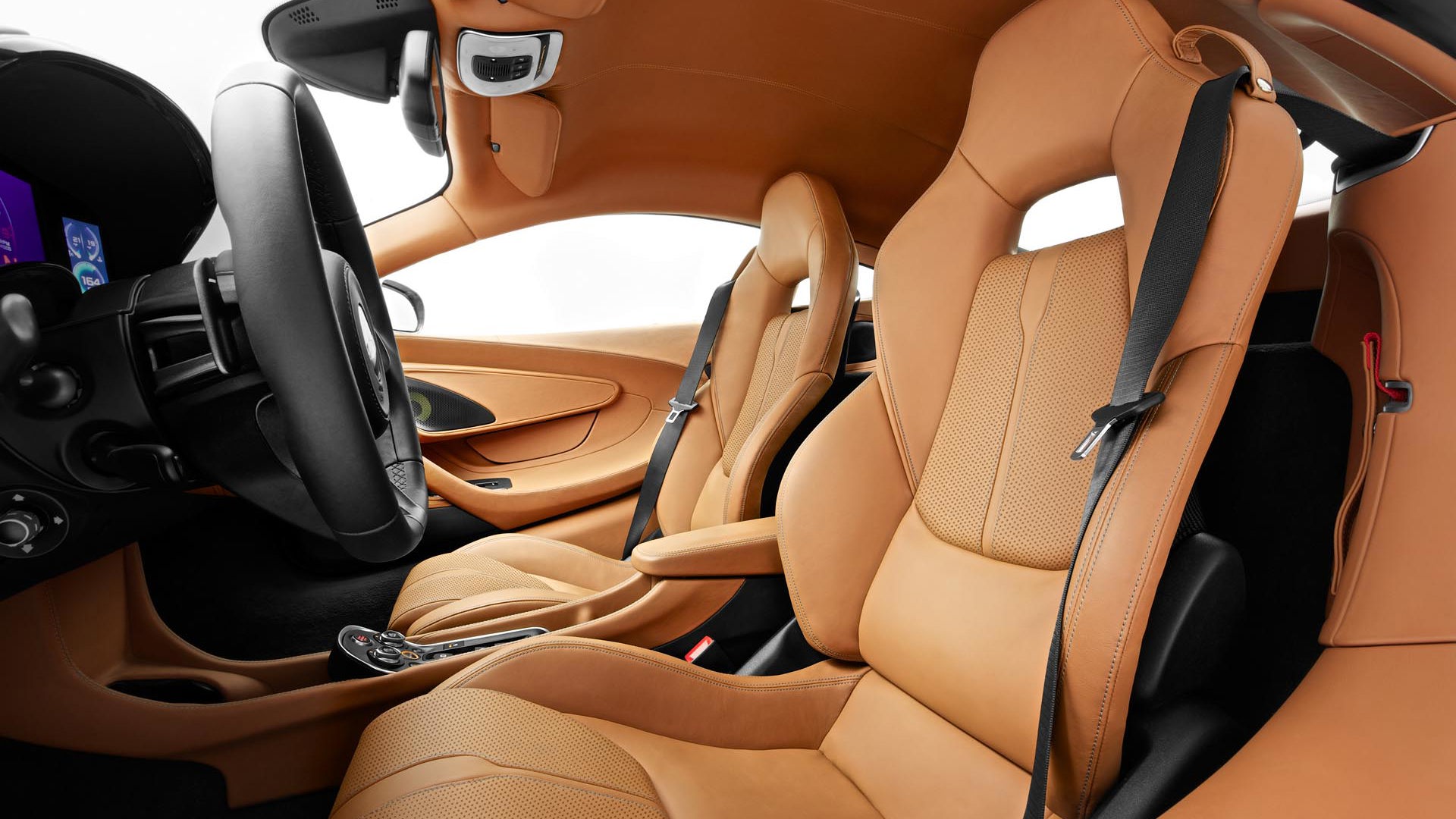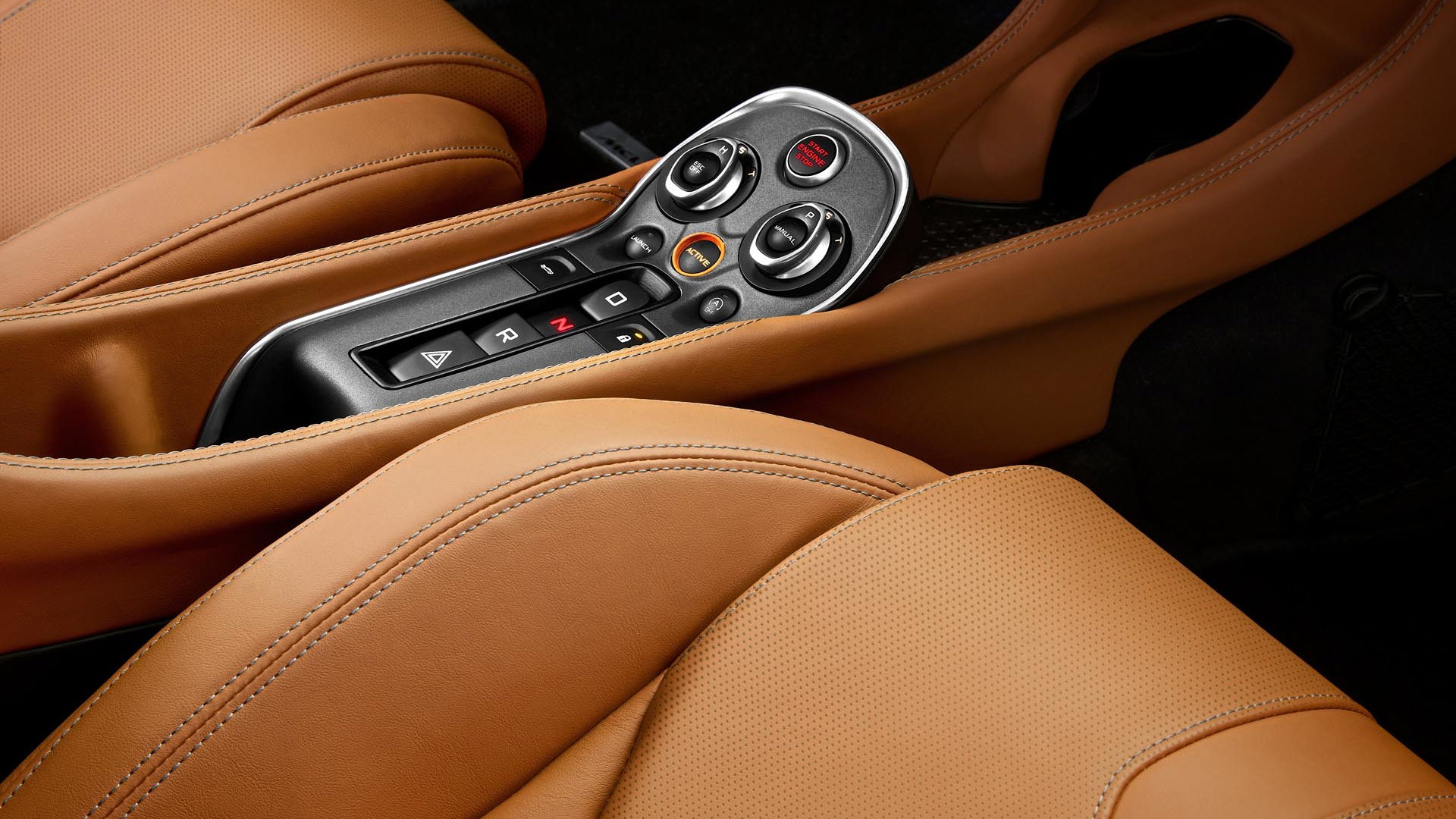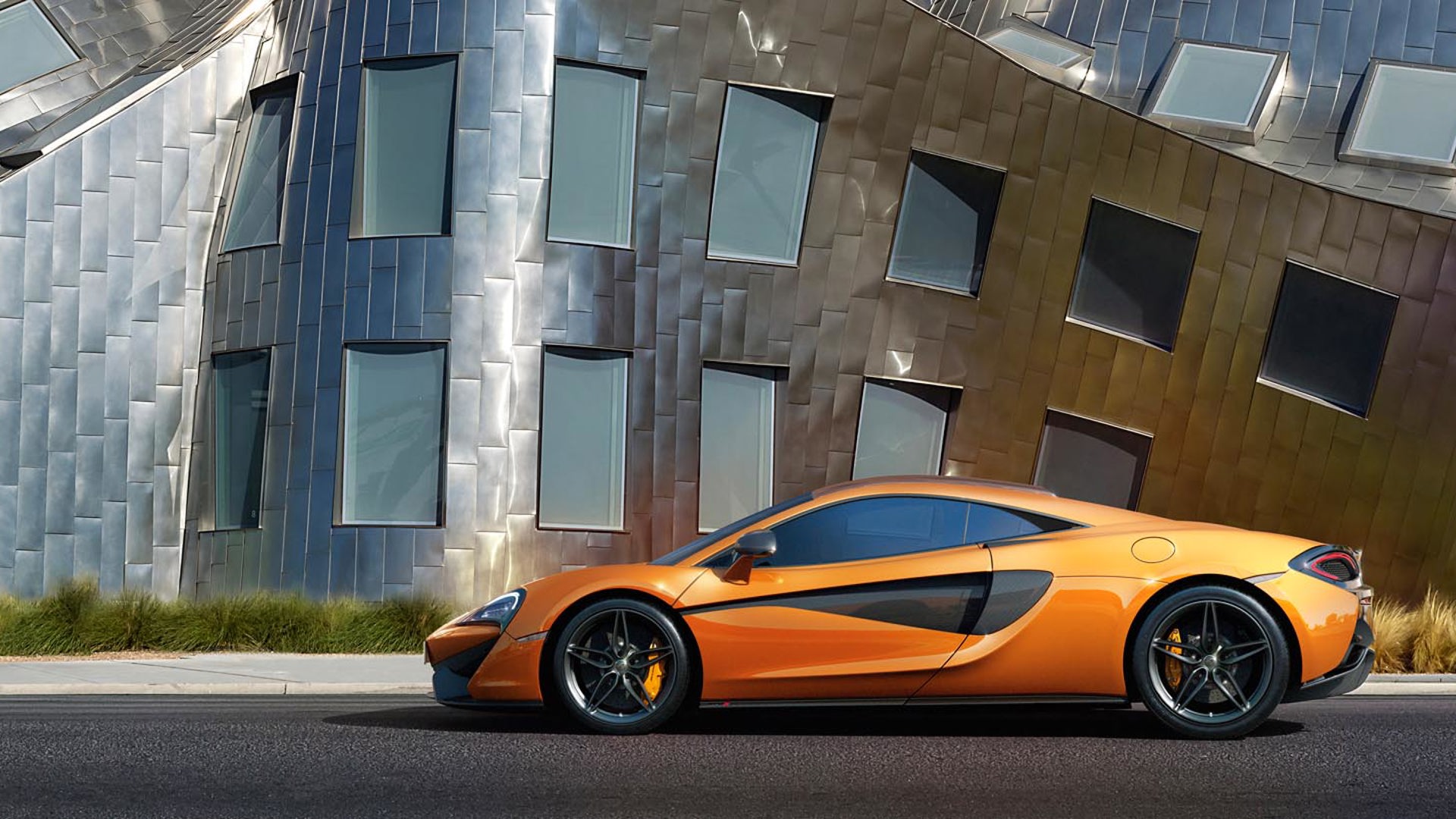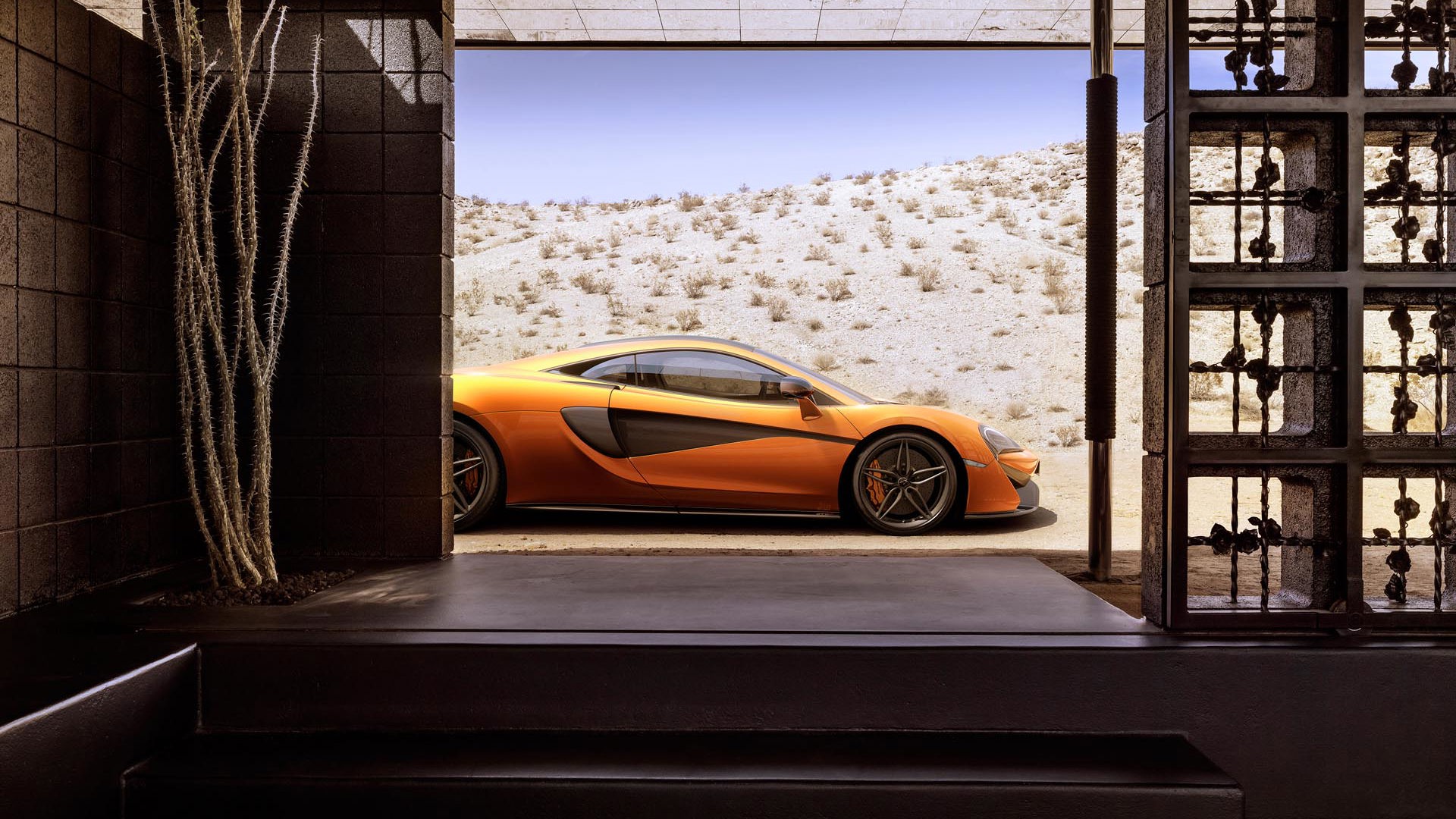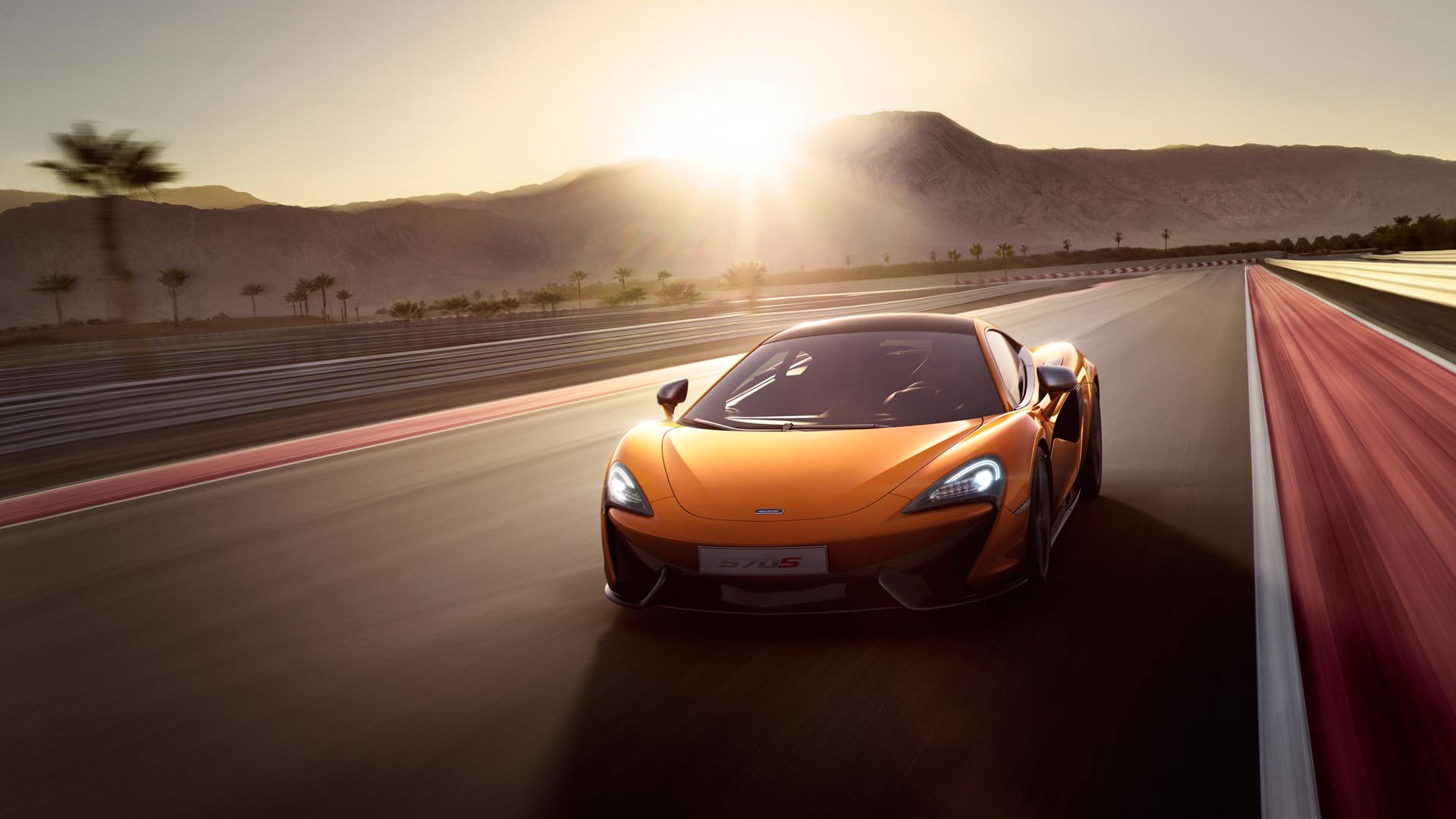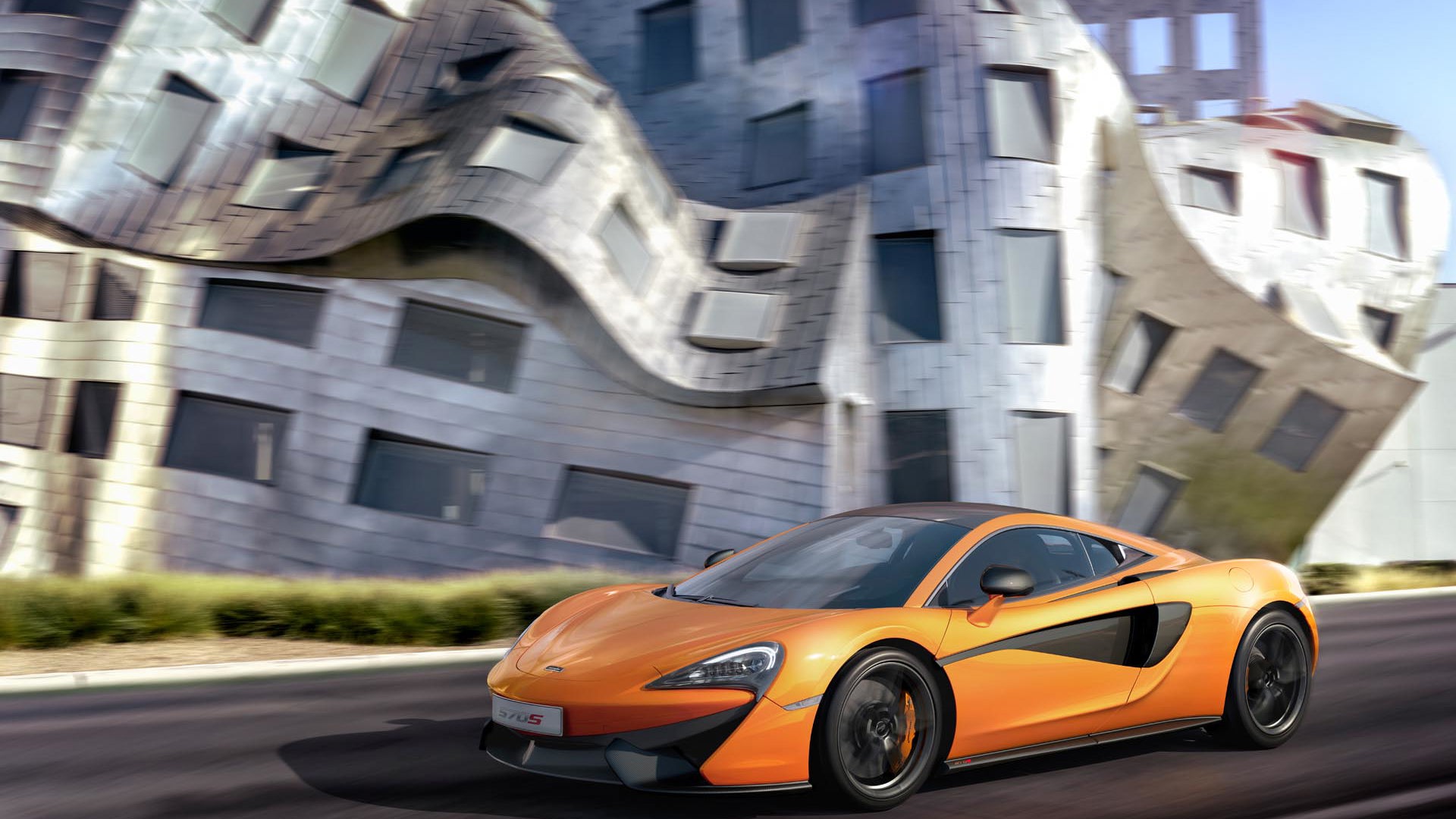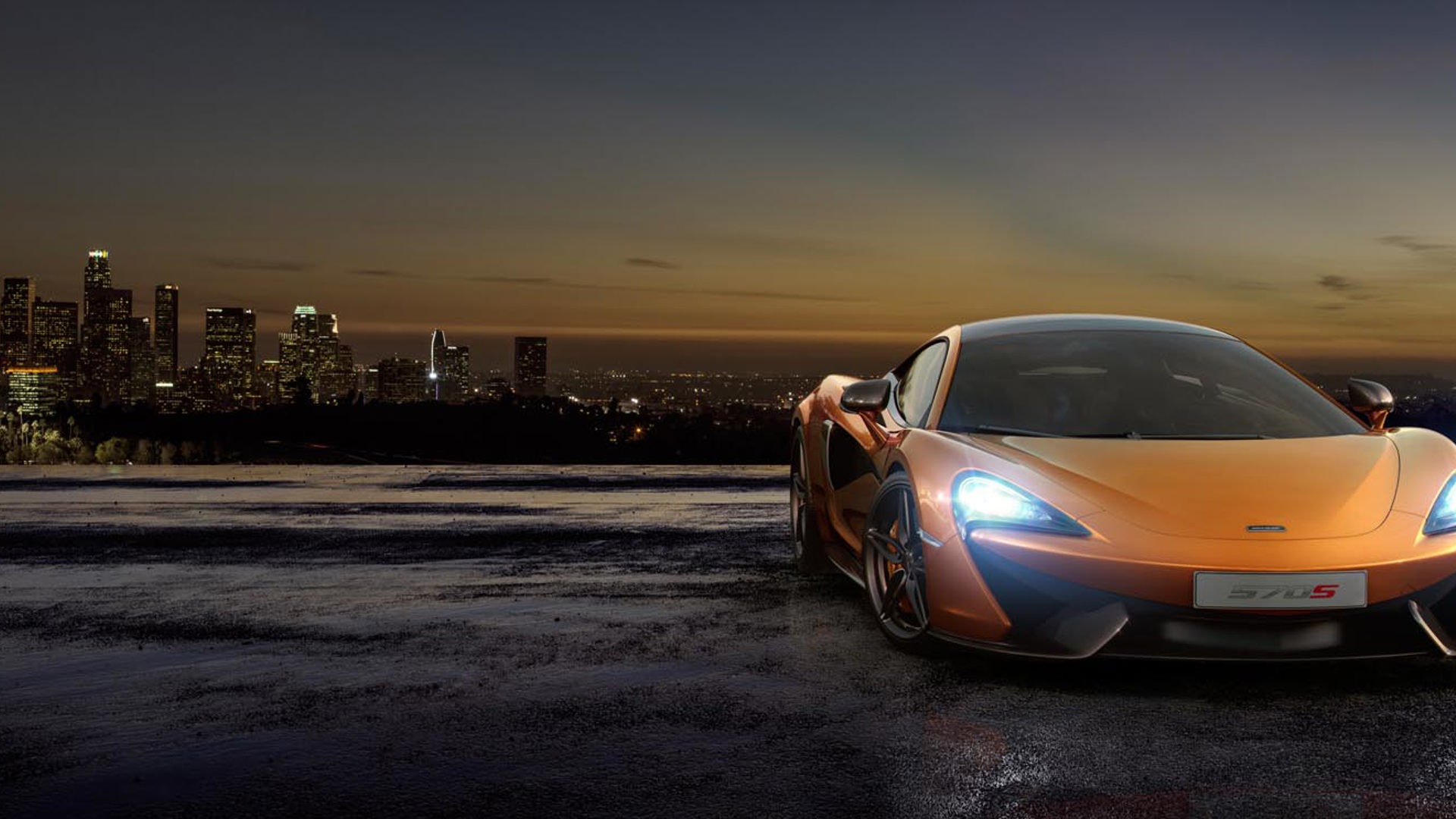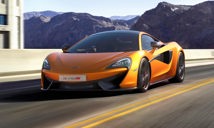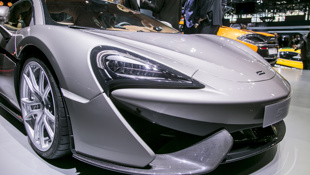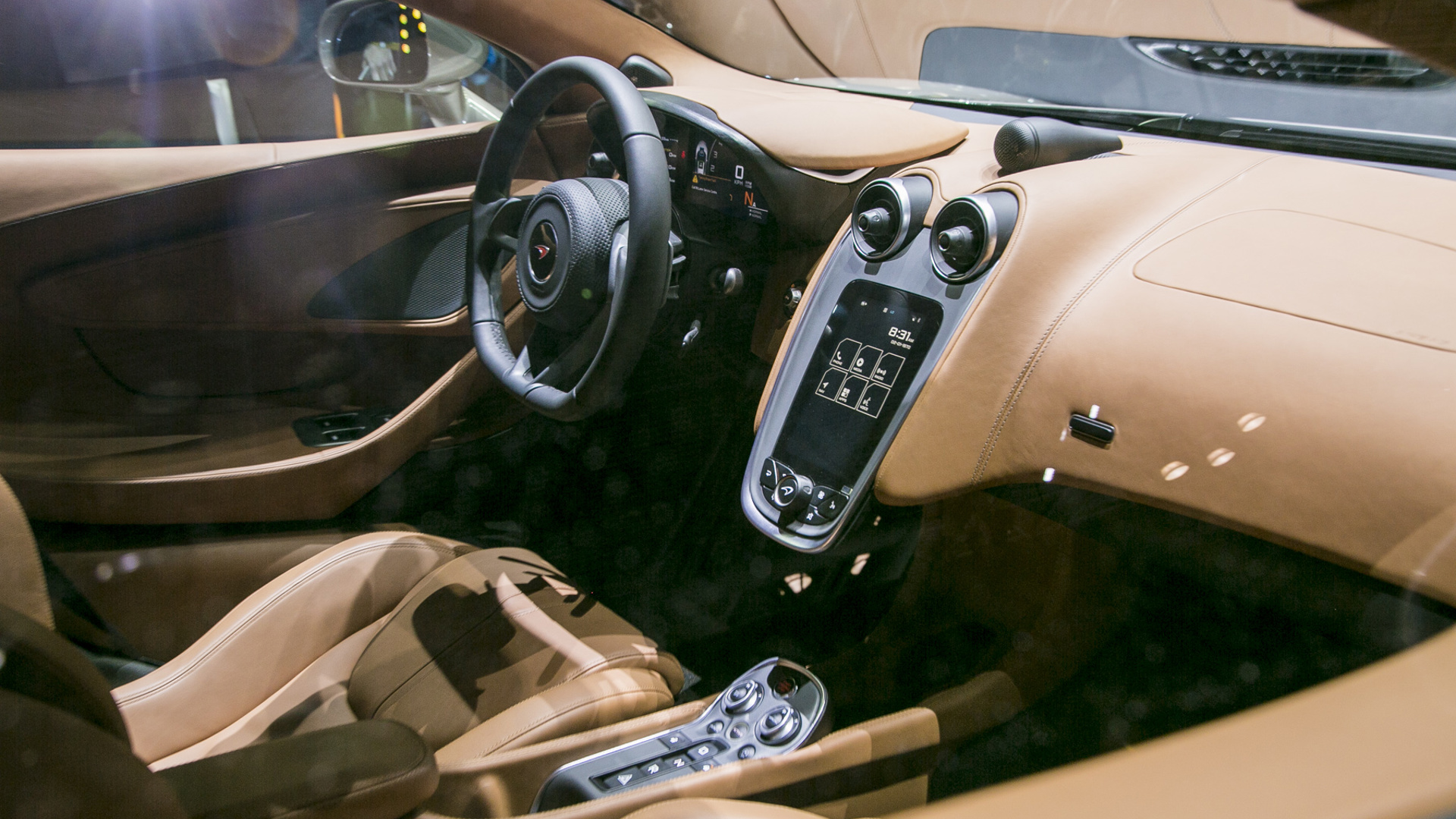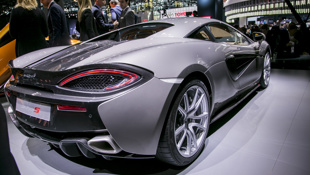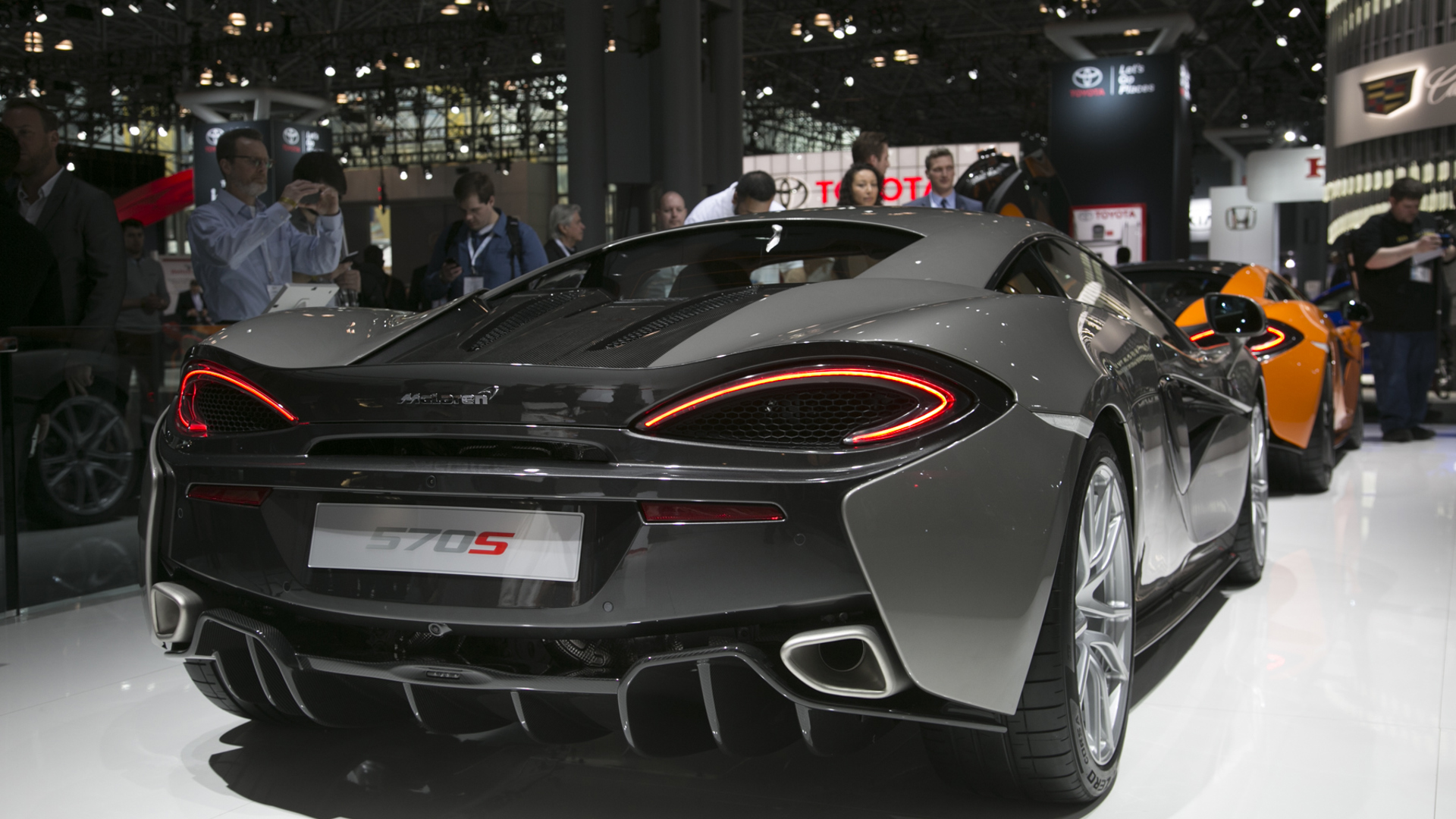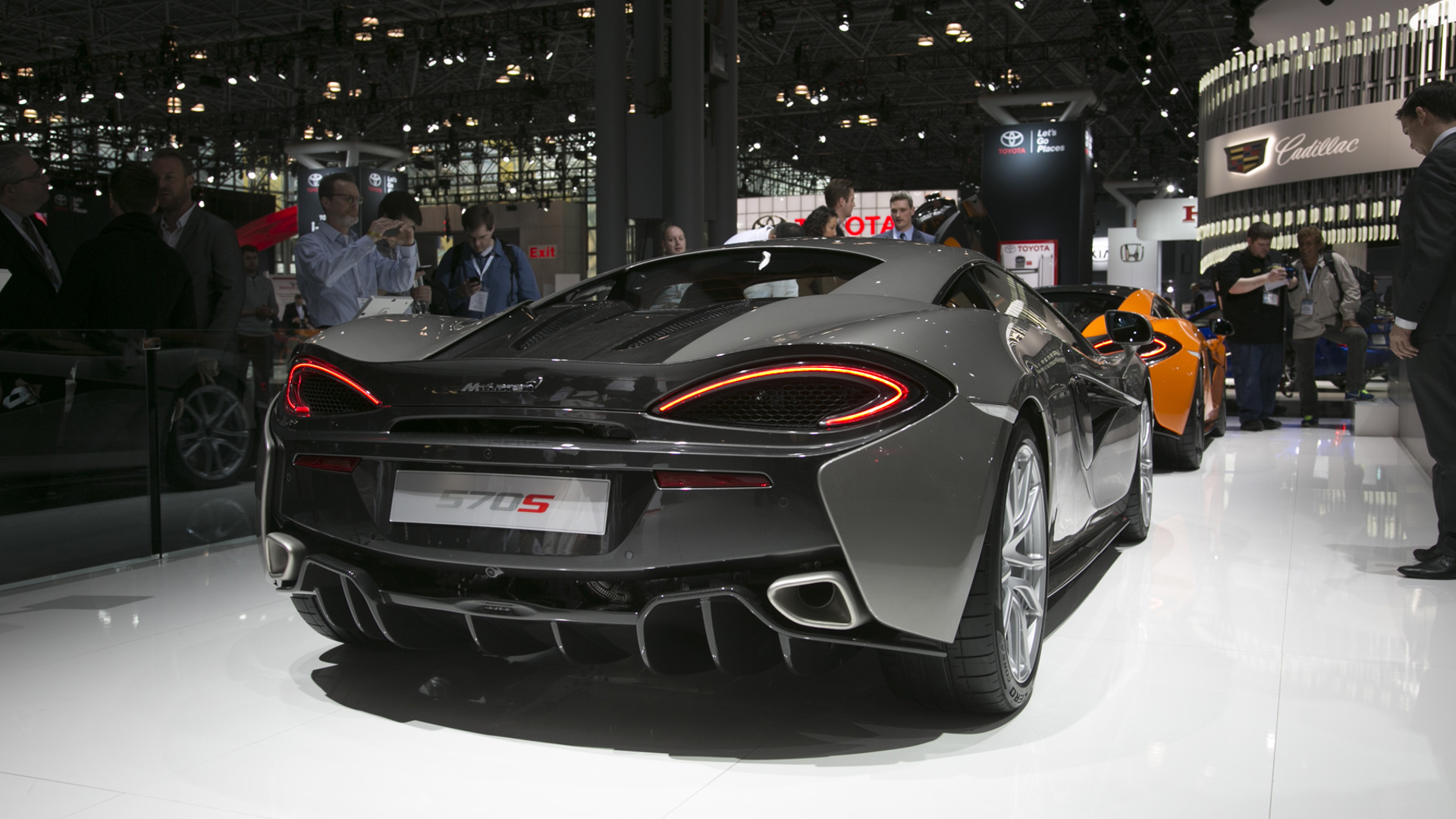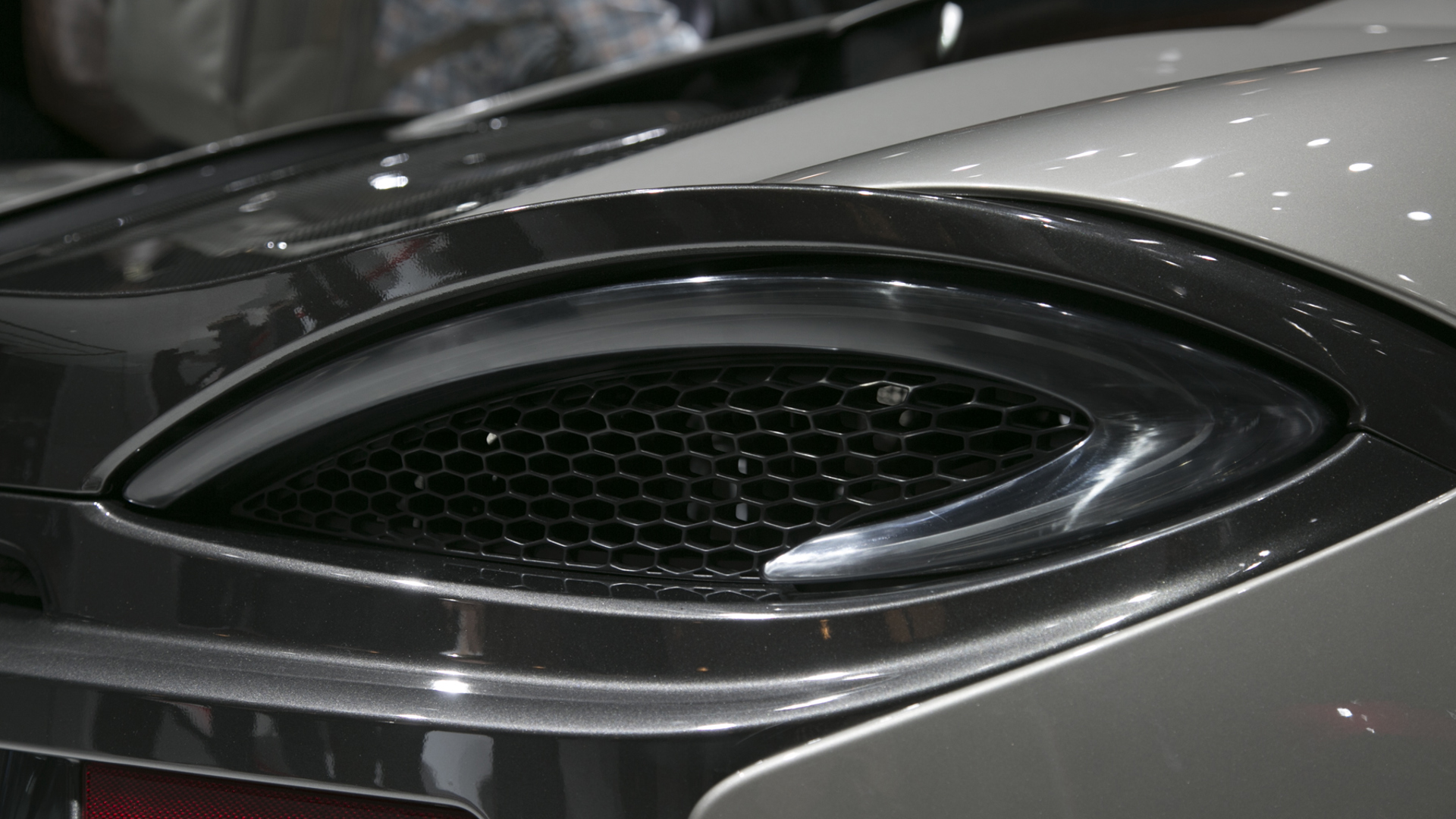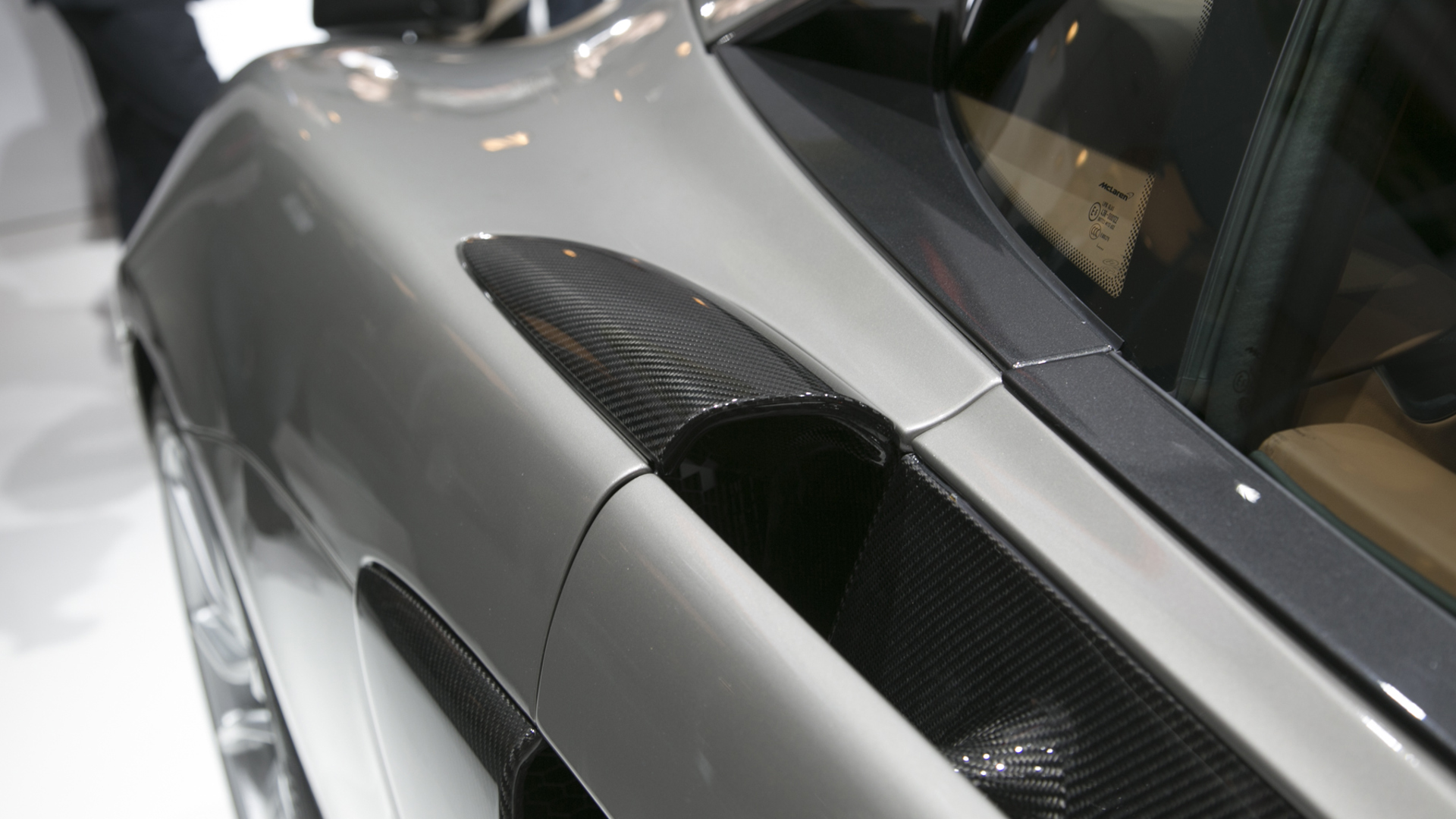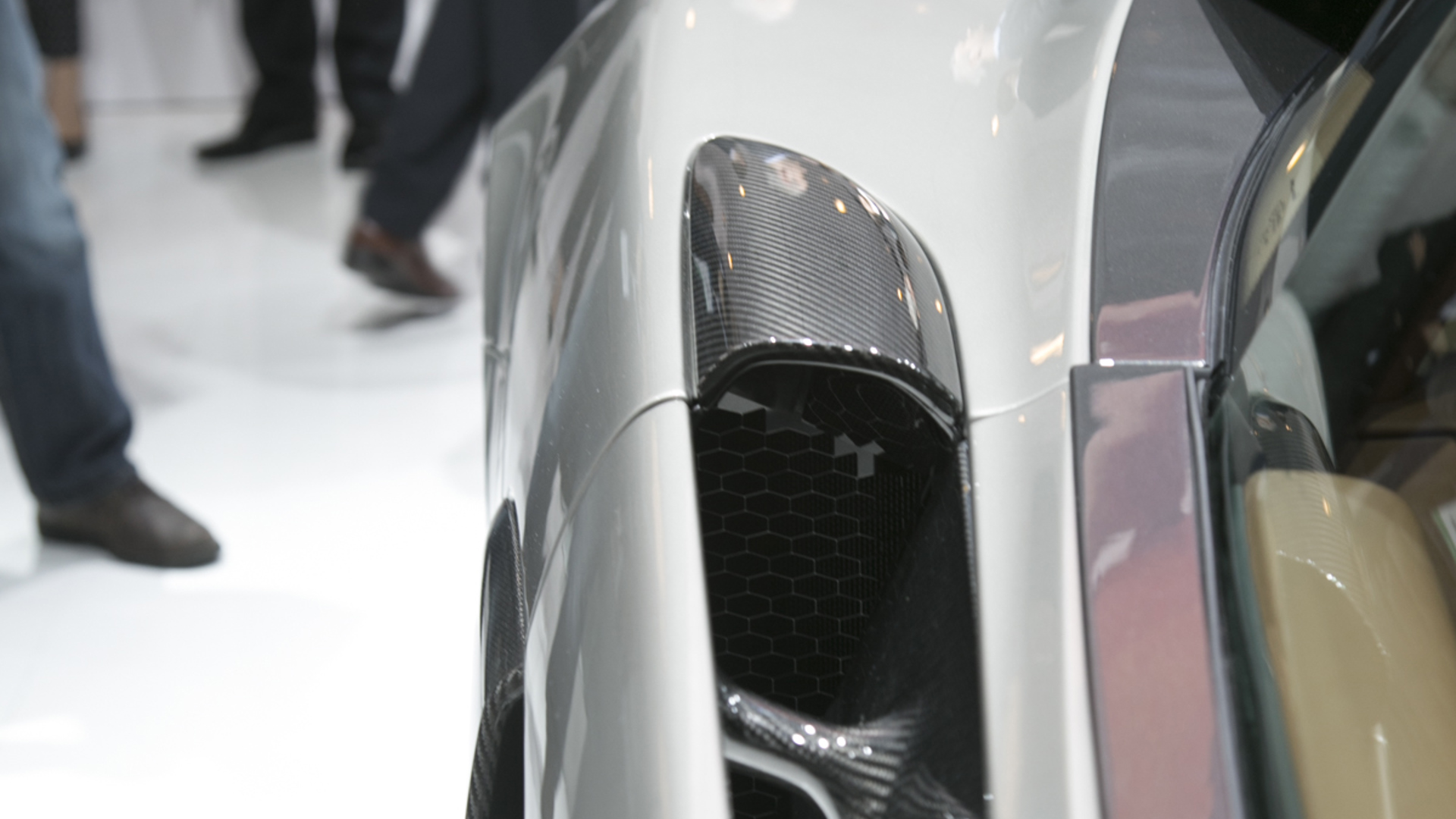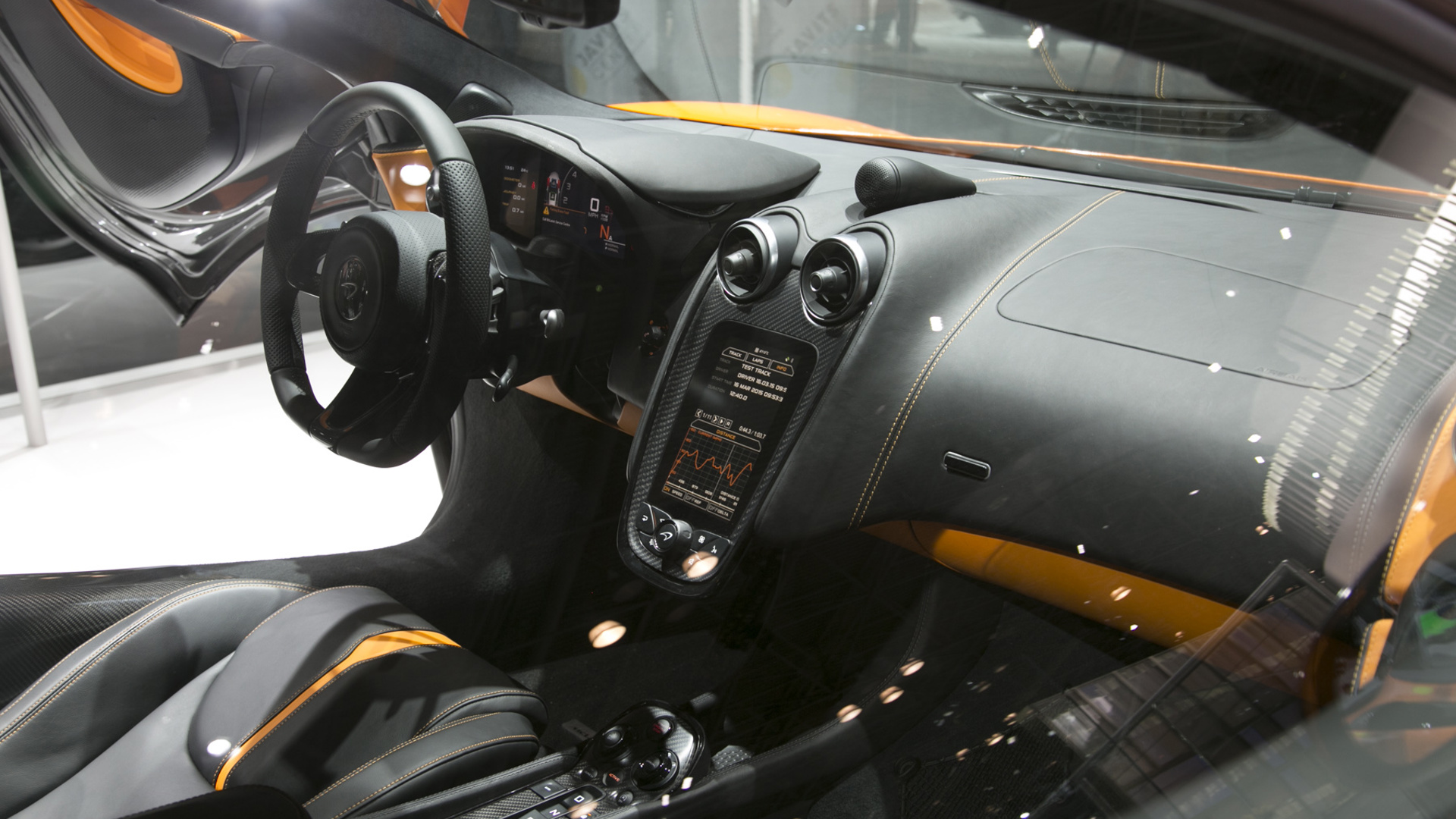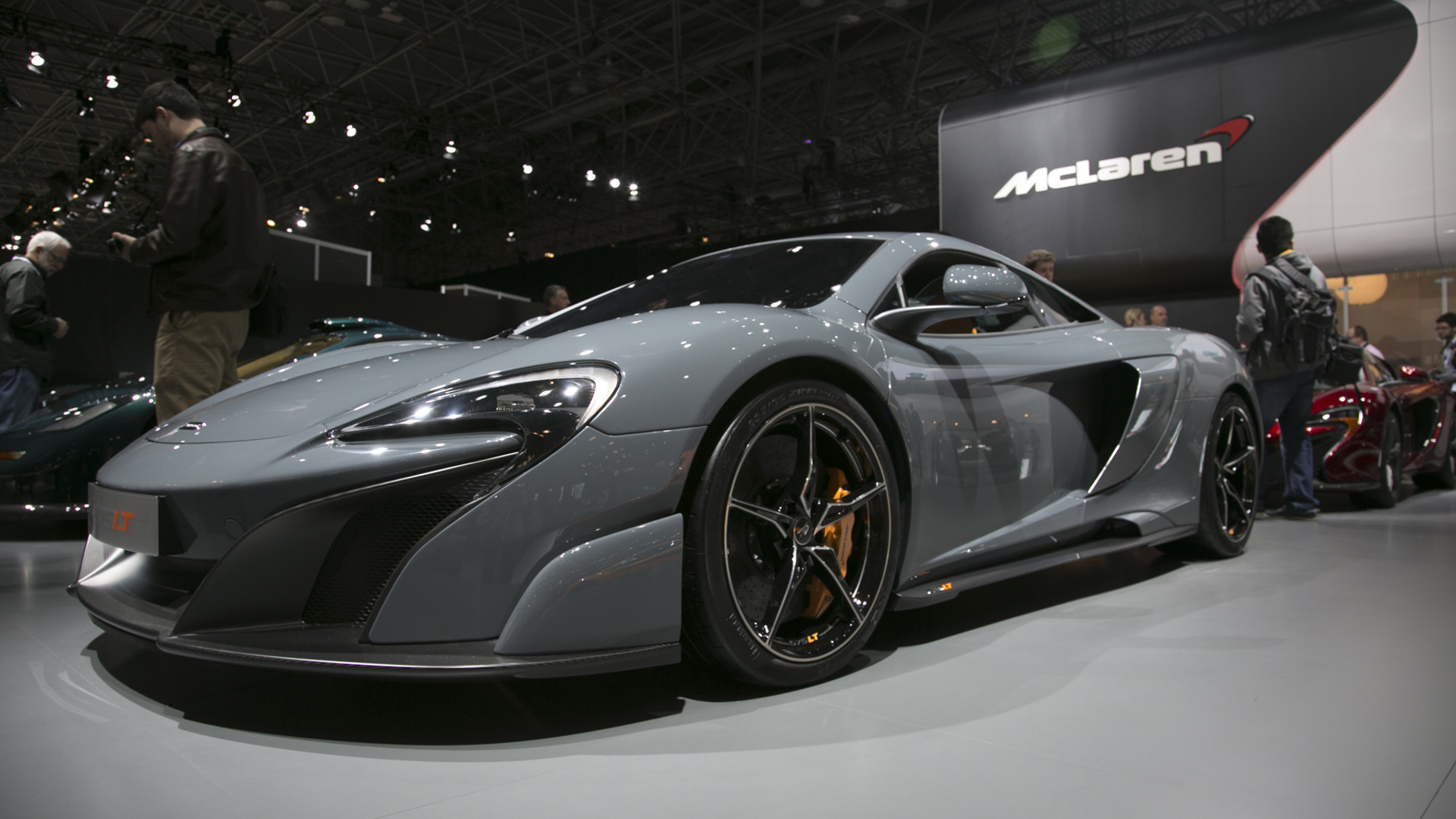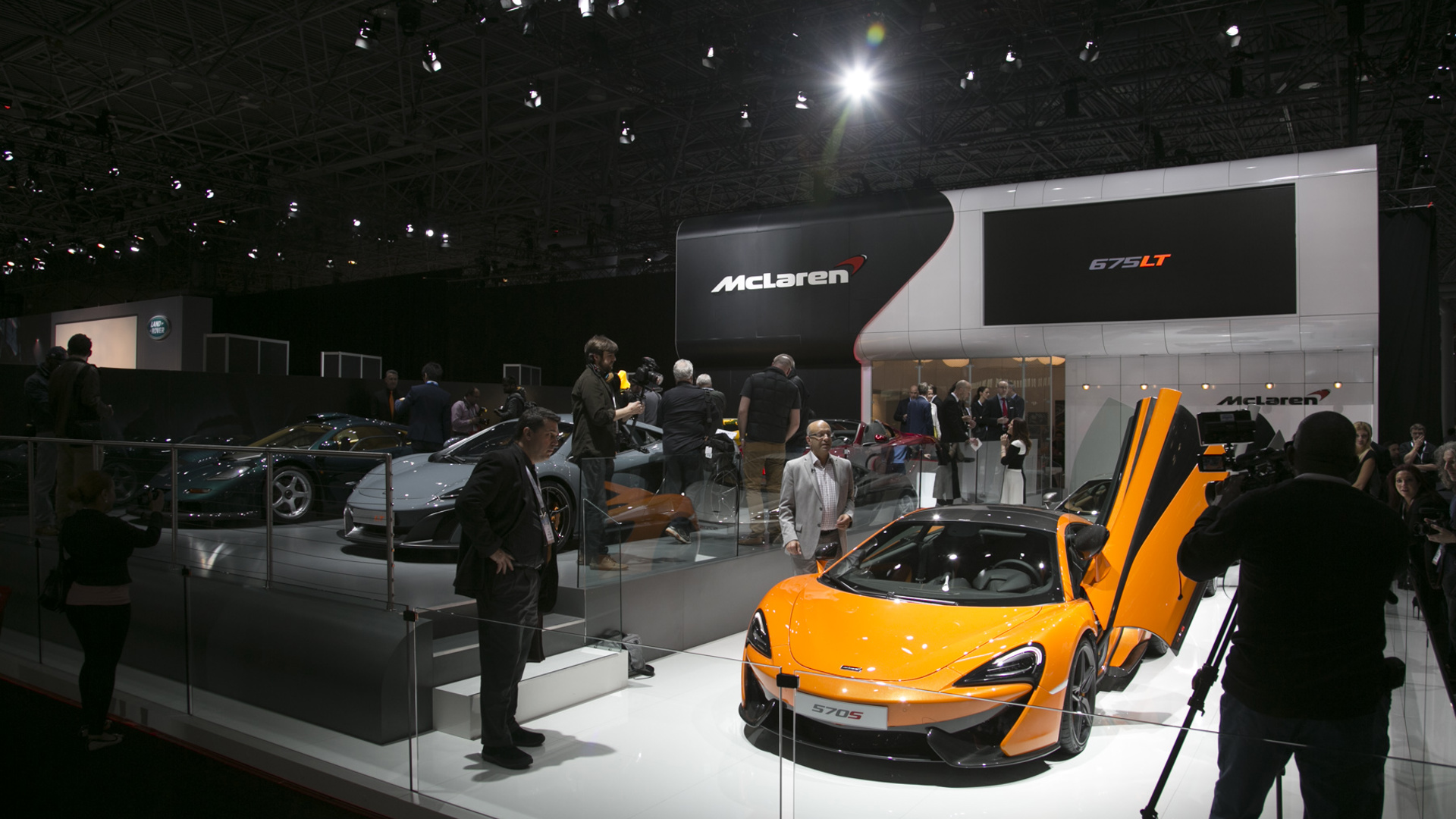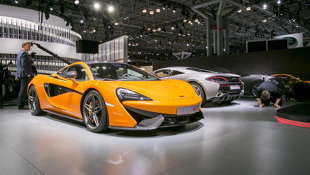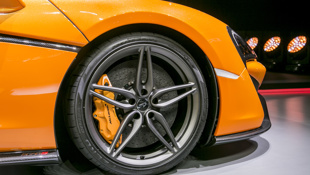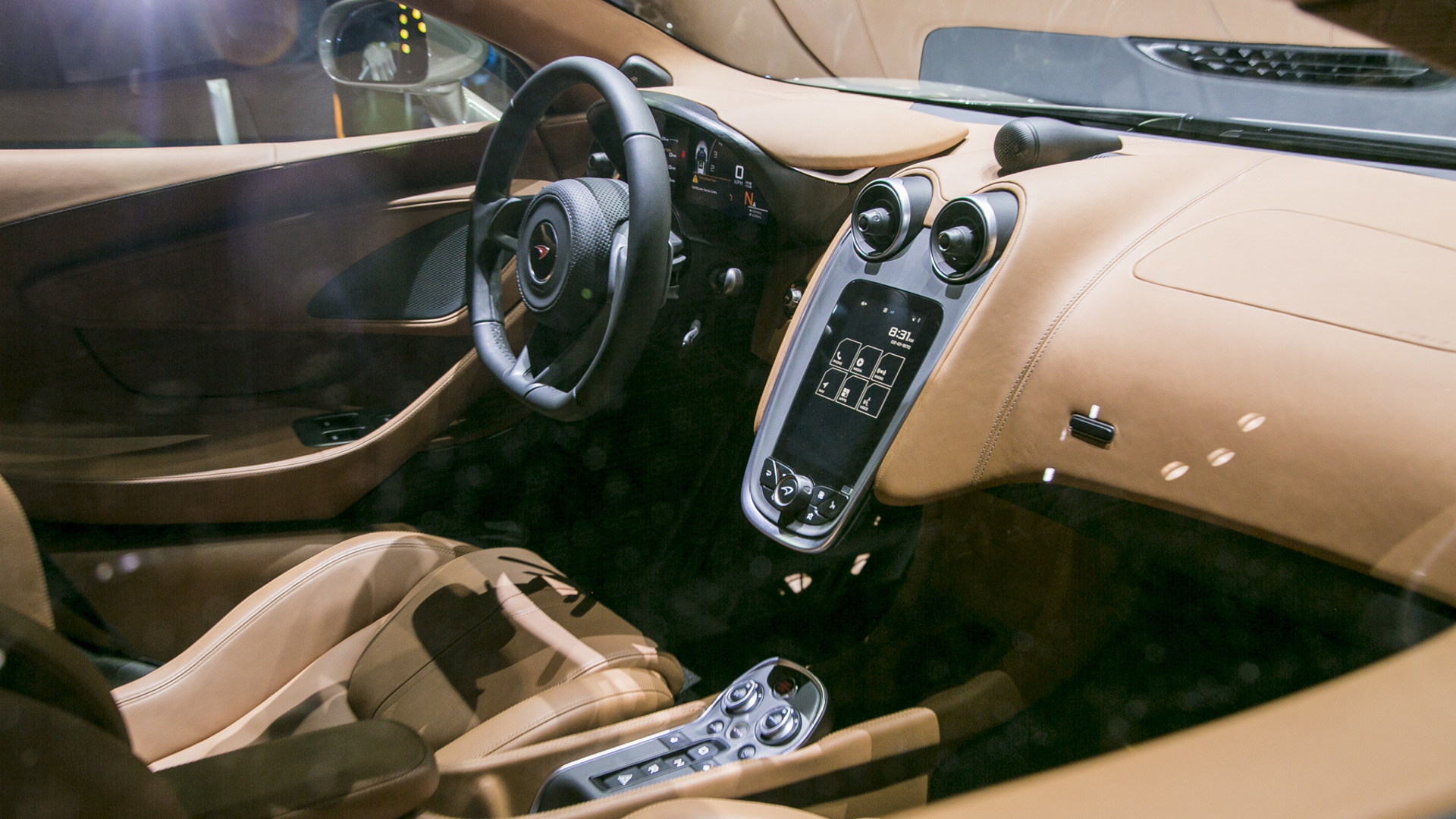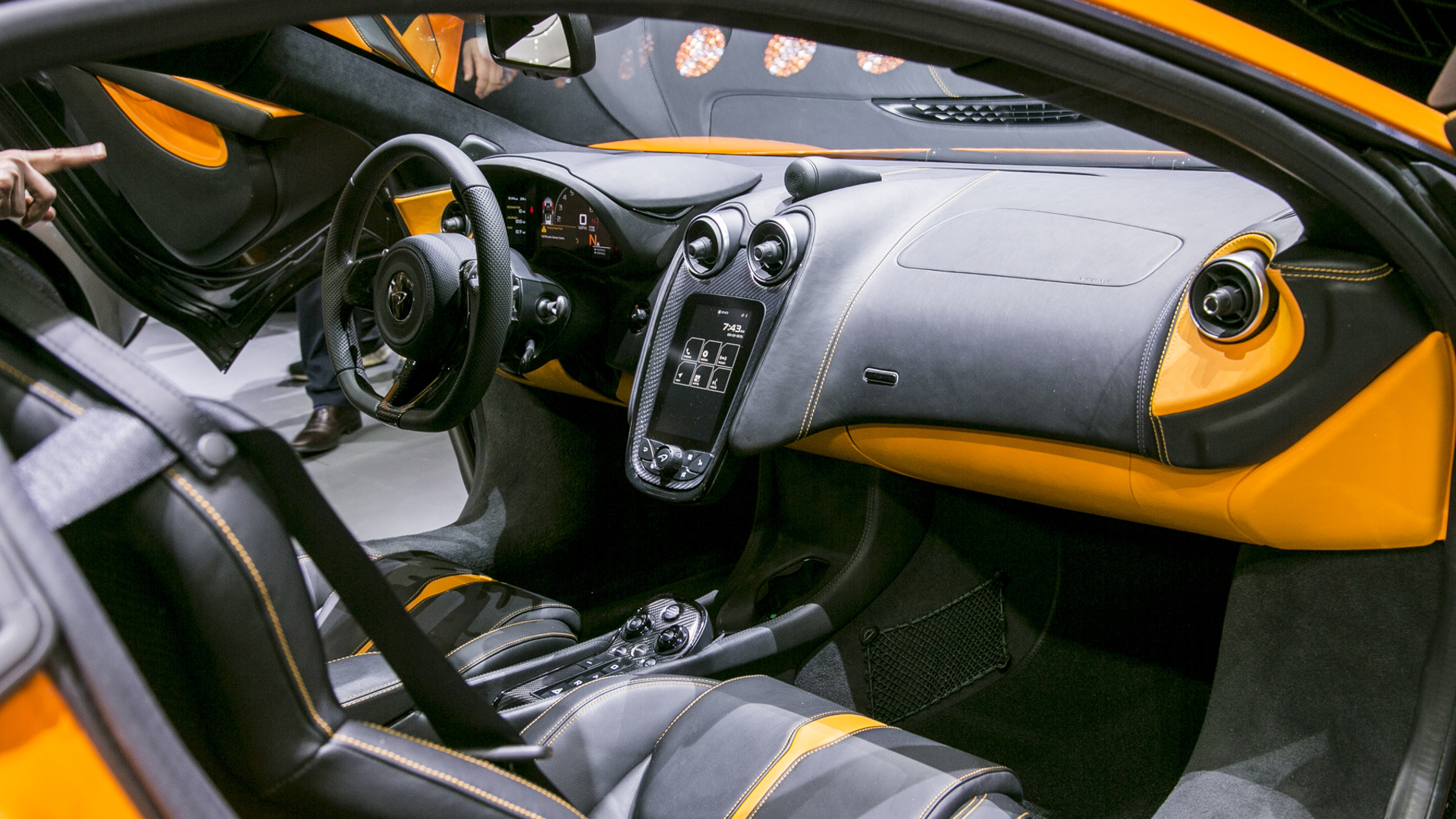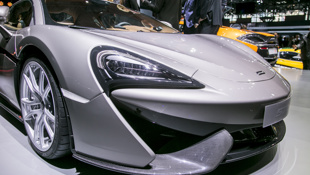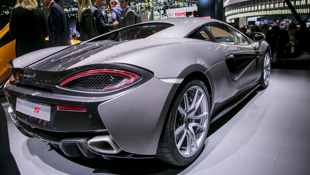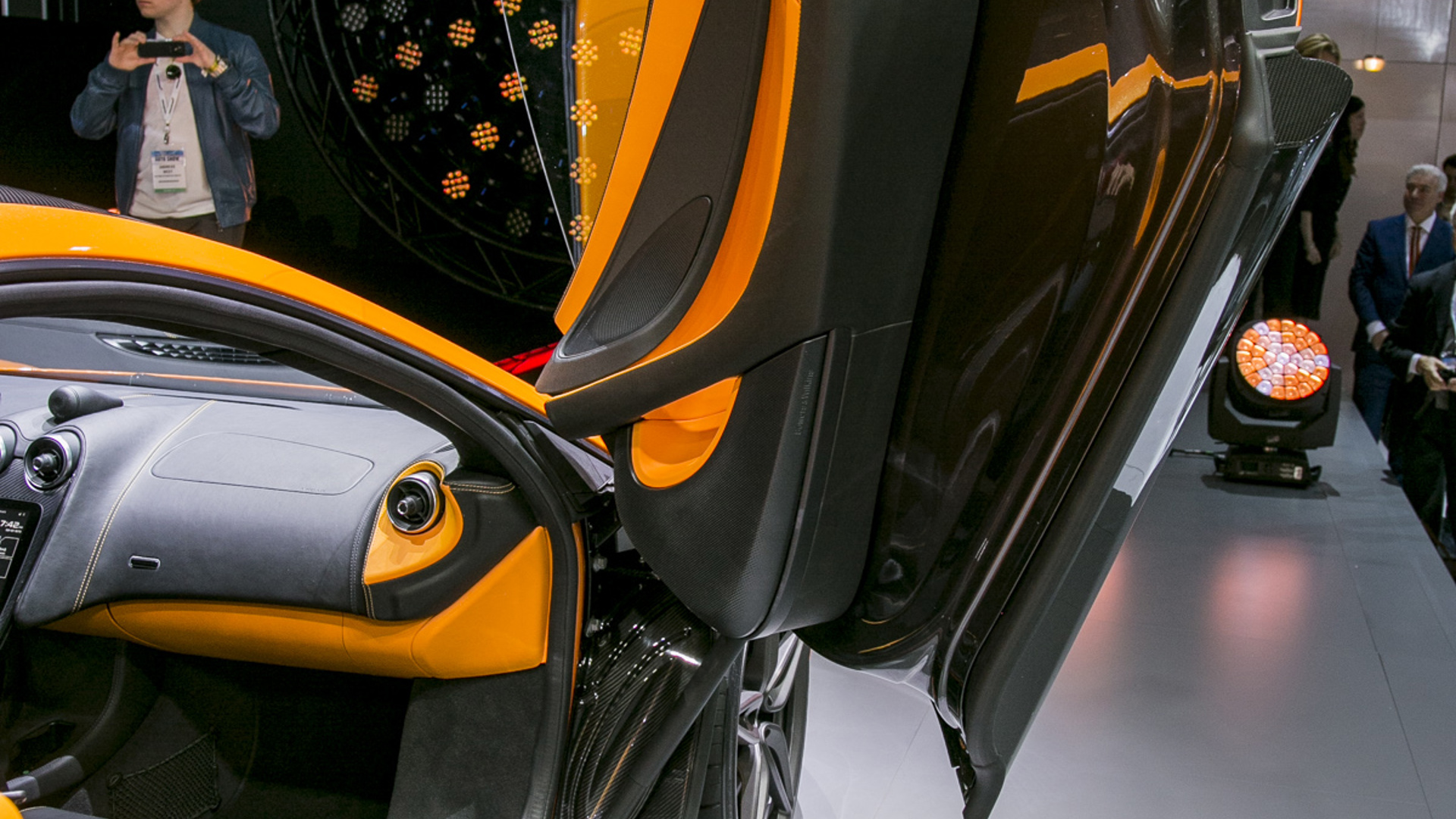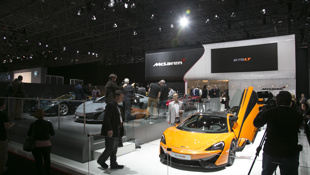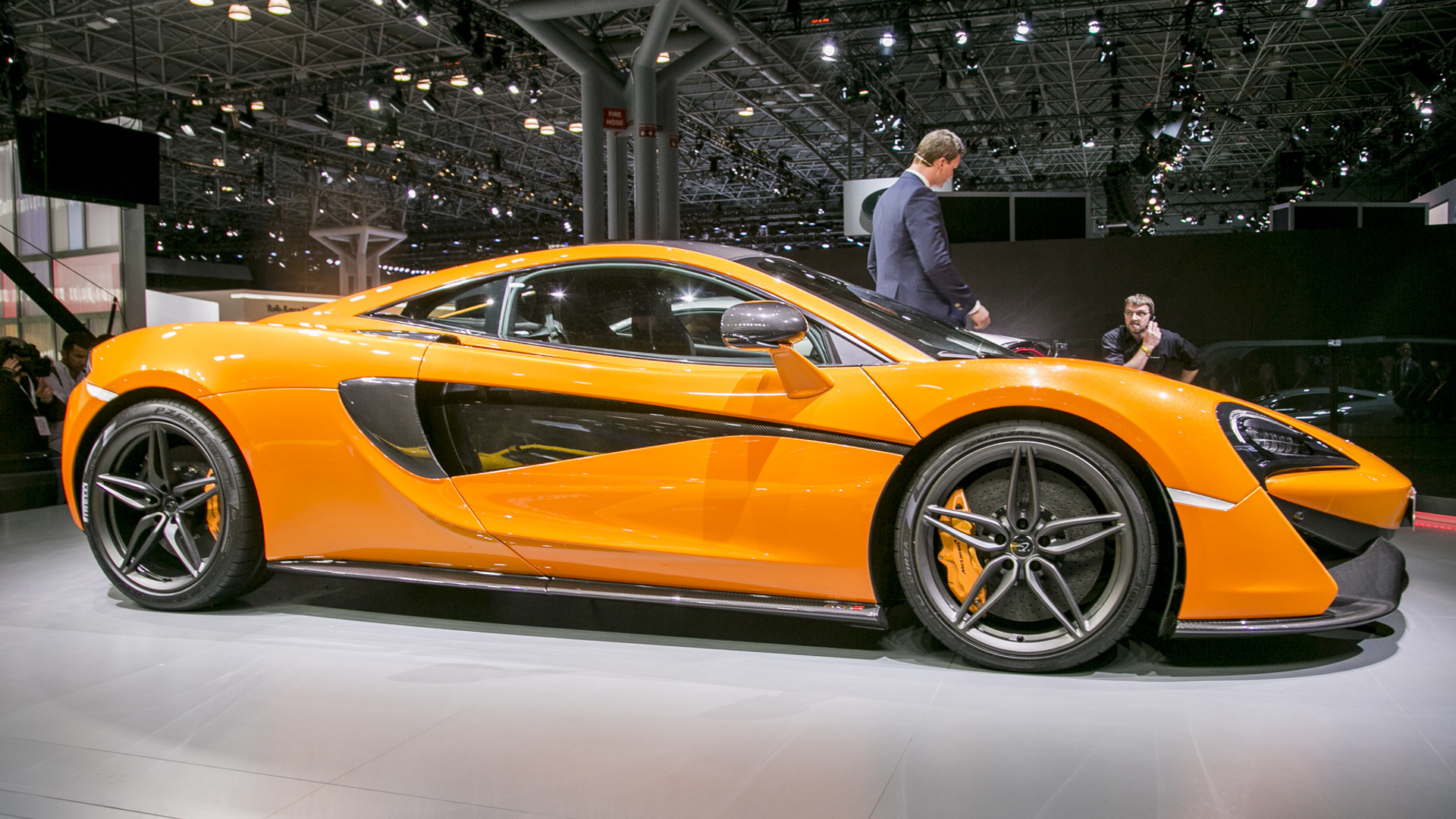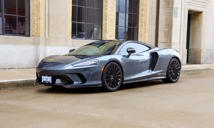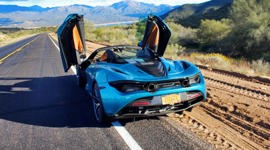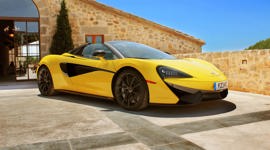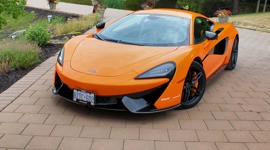McLaren to the automotive world is like Louboutin to the world of shoes. It's more than a brand, it's a marque. You can't just go out and buy a 'cheap' Mclaren to go grocery shopping or take an extended road trip to Disneyland with two screaming children in tow; in the same way you can't go out and buy a 'cheap' pair of Louboutins to go for an afternoon stroll through the woods. They don't make cars... they make supercars.
You can't just go out and buy a 'cheap' Mclaren to go grocery shopping or take an extended road trip to Disneyland with two screaming children in tow. They don't make cars... they make supercars.
Unlike many other manufacturers, McLaren didn't get their start by building mass-market commuter appliances. They cut their chops in the Formula One world and can boast they're the second oldest active team in F1, just after Ferrari. In 1989, McLaren Cars (we know it as McLaren Automotive now) was established and the McLaren F1 was unleashed upon the world. Impossibly fast, innovative, technologically advanced, limited and expensive, the F1 became a legend and set the record for the world's fastest production car in 1998, running a ludicrous 391 km/h or 243 mph down Ehra-Lessien's 9 km straight (with the rev limiter removed). This was even more impressive when you remember the F1 was naturally aspirated. This record stood until 2005.
Since then, we've seen the Woking marque come out with three models that stay true to their longstanding heritage. The mid-engine twin-turbo 3.8L V8 MP4-12C (12C) was launched in 2011. The P1 was launched soon thereafter in 2013 - a plug-in hybrid supercar pumping out a whopping 903 hp. All 375 P1 units were sold out before they even hit the dealer showrooms at the end of 2013. Next up was the 650S. In 2014, McLaren released their new "entry level" supercar, the 650S. Based upon the same chassis as the 12C, the 650S was essentially a less expensive, slightly detuned version of the 12C - this isn't a bad thing, as evidenced by the 650S's ability to tear up to 100 km/h from a standing start in 3 seconds. Even more astounding is its ability to hit 200 km/h in just 8.4 seconds. It takes less time for the 650S to hit 200 km/h than a Toyota Corolla takes to hit 100 km/h.
Nice plate: Deadmau5’s McLaren P1 – DatP1Tho
The magicians at Woking have just unveiled their newest creation at the 2015 New York Auto Show and it's a technological modern masterpiece of engineering, design and sex appeal. Designated the 570S Coupe, it's touted as their new "entry level", accessible Sports Series car.
Next to all the other major manufacturer's booths at the NYIAS, the McLaren booth was tiny. When I rolled up to the press conference 15 minutes before the unveiling of the 570S, the surrounding areas were jam packed with eager journalists, videographers, executives, basically everyone and anyone who was at the show was there. The excitement and anticipation was palpable. Being of small stature, I was able to secure a spot in the front row while uttering "Sorry, I'm Canadian" a few times.
It felt like New Year's Eve once the 10 second countdown to the reveal began. And as a testament to how excited the crowd was, the cover was lifted off the 570S to the sounds of cheers and whooping. Once the hubbub died down a little, I had to remind myself to breathe. I hadn't even realized I was holding my breath.
What does all of this have to do with the actual cars, you ask. I tell you all this because I feel that it provides a little background to just how special McLaren as a brand is, how exciting the announcement of an even less expensive McLaren is. And just how captivating and innovative they are as a marque. Okay, enough of my schoolboy gushing and on to the goods.
You may recall earlier on in this piece, how I said McLaren was a supercar brand. Well, the 570S is classified as a sportscar, not a supercar. What's the difference? Well, a 650S in base trim will cost you around US$300,000. A P1 in "base" trim will cost you over a million dollars. The 570S, my friends, is relatively accessible for the same folks who shop in a Porsche dealership (on the Turbo side of the showroom) and sits at around the US$185,000 range (Canadian pricing has not yet been released).
The $185,000 range puts the 570S Coupe in the same realm as the Porsche 911 Turbo S, Maserati GranTurismo or an Audi R8 V10 Plus. Now that we know what we're working with, let's move on to why the 570S is worth every single one of those dollars and why you should be buying a 570S over any of the aforementioned cars.
Forget 570S: McLaren Announces the 570GT
Dave Eden, McLaren's Global PR Manager, says the 570S aims to be in the sportscar price range but delivers a "next level up" performance. Meaning you're paying sportscar money but you're getting supercar performance.
Let's start with the powertrain. At the heart of the 570S lies a mid-mounted 564 hp (or 570 PS, hence its name) 3.8L twin-turbo V8, named the M838TE. The new 3.8L lump is an evolution of the current 3.8L. McLaren says it's made up of 30 percent new parts. The block remains the same but the entire top end is new for the car, from the head to the exhaust, it's all 570S specific. Peak power comes on at 7,400 rpm and all 443 lb-ft of torque comes into play from 5,000 rpm and remains in peak form till 6,500 rpm. Power is transferred to the rear wheels with a seven-speed SSG transmission with flappy paddles.
This kind of power, combined with its lightweight chassis, propels the 570S to 100 km/h in just 3.2 seconds. It'll take you 9.5 seconds to hit 200 km/h from a standing start, all the way up to its top speed of 328 km/h (204 mph), earning the 570S membership in the 200-mph club.
Based on the current Super Series chassis, the unique carbon-fibre MonoCell II chassis for the 570S has been designed with more of a focus on day-to-day usability, offering improved ingress and egress from the cabin. This is achieved with a lower sill height and a wider cabin. The chassis is incredibly strong and stiff yet, ridiculously, weighs less than 80 kg.
Unlike the P1 and the 650/675, the 570S is made up entirely of aluminum body panels. Whereas the P1 is entirely CF and the 650 is a mixture of CF and aluminum, the 570S is all aluminum to keep costs lower while keeping its weight down.
The combination of the CF chassis combined with all aluminum body panels means the 570S carries a curb weight of 1,313 kg or 2,895 lb. This is almost 150 kg lighter than its nearest competitor.
Rolling stock comes courtesy of a range of new forged wheels wrapped in Pirelli P Zero Corsas - 225/35-R19 on the front and 285/35-R20 on the rear. To keep the party in check, massive carbon ceramic brakes with monoblock calipers are fitted as standard.
All this fancy technology is ensconced in a cocoon of aerodynamic delight. Rob Melville, Chief Designer for the 650S, says he based the design and style of the 650S off the legendary stealth jet, the SR-71 Blackbird. Most of us born before 1980 grew up with posters of the impossibly swoopy and menacing stealth spy plane. Similar to the SR-71's design, McLaren says every single line and part on the 570S serves a specific function. The 570S is an evolution of everything McLaren has learned from developing the Super Series and the P1.
The ‘shrinkwrapped’ design highlights the latest evolution of McLaren's design philosophy. Dave Eden expands on the shrinkwrapped design: “The 570 is everything we’ve learned from the Super Series and the P1, and we’ve put it into a newer and tighter package. Huge performance for a relatively small price."
To get a feel for Woking's latest, let's start from the front. The nose of the car has a very defined point. It's even more pronounced than the previous cars. It's designed as a high-pressure point to pierce the air as quickly and cleanly as possible. The air continues to flow over the sculpted hood, which channels air over the front wheel arches and past the signature McLaren dihedral doors into the side intakes and underneath the car.
Flying buttresses at the rear of the teardrop-shaped glasshouse form part of the aero package, directing air over the shoulderline of the 570S and across the rear deck aiding heat evacuation from the exposed engine bay and increasing downforce by up to 8 kg. A flat underside combined with a large diffuser, works with the fixed aero (unlike the Super Series and P1 that both use active systems) and ties the entire aerodynamic package of the 570S together.
Super-formed rear fenders ensure clean air is delivered to the fixed rear spoiler, again maximizing downforce. The rear of the car is clean and uncluttered, with LED light-blade rear lamps that follow the form of the sculpted panels. The rear of the vehicle features an aluminum mesh allowing effective heat evacuation as well as a view into the engine bay. The twin exhausts exit below the rear bumper, on either side of the newly designed and highly intricate rear diffuser.
This purposeful design allows no room for useless aesthetics. Everything has a purpose and the design ensures a car that not only cuts through the air, but uses the same air for creating the perfect amount of downforce while keeping things cool.
The 570S also sets itself apart from the 650/675 and P1 by utilizing a conventional anti-roll bar system - instead of the hydraulic units in the 650/675 and P1 - combined with independent active dampers. Eden says, "We wanted to make a car that was exciting to drive without intimidating the driver. A sportscar suitable for everyday driving while offering supercar levels of performance."
Suspension and steering settings are controlled via two switches in the cabin. The first switch controls the powertrain setting with the familiar 'Normal', 'Sport' and 'Track' handling settings. In 'Normal' mode, the system provides a refined yet engaging ride, while the 'Sport' and 'Track' settings allow the 570S to become more track-focused when you feel like getting rowdy. The damper switch allows you to tweak how stiff the ride is, independent of the powertrain settings.
Moving onto the interior: The cabin of the 570S has been designed around the driver (like every McLaren), with a clear focus on engagement, visibility, functionality - more than any McLaren before it. Daily driver usability and space was kept in mind.
The standard sport seats are leather upholstered – racing seats are optional – offering a high level of comfort and support, suitable for everyday life, longer road trips, or a weekend at the track. The dashboard and steering wheel are also all leather trimmed. Intelligent and ergonomic design within the cabin provides extended stowage space, with the most usable space of any McLaren model to date, with 150 litres more storage in the front luggage bay than previous cars.
As it's 2015, no car would be complete without a full infotainment system. The new system features an all-new TFT digital instrument cluster that changes configuration according to driving mode, a seven-inch IRIS touchscreen (mounted with the vertical configuration for maximum utility and design), integrated climate control functionality, Bluetooth connectivity and satellite radio, mounted on a 'floating' centre console. Despite the extensive specification list, weight-saving is still a key focus of the interior and the McLaren Audio four-speaker system ensures the optimal sound quality at the lowest possible weight. For you audiophiles, McLaren Audio Plus eight-Speaker Upgrade System and bespoke Bowers & Wilkins 12-Speaker Premium Audio System with 1280W surround sound upgrade is also available.
The Sport Series 570S is the most customizable McLaren to date. Eden says that along with all the options listed in the book, which include a wide variety of exterior and interior customization, a selection of factory-trimmed Alcantara, nappa leather and carbon fibre treatments are available. In addition, McLaren designers have created a range of 'By McLaren' interior specifications, similar to those also available on the 675LT, combining carefully selected colours and materials designed to best showcase the stylish cabin space and complement each exterior paint colour. If it's not listed in the books, McLaren Special Operations has you covered.
Beyond the carbon mirrors and intakes available in the books, if you can think of it, chances are, MSO can do it, similar to the customized P1s.
Have McLaren done it? Built a car with sportscar pricing but supercar levels of performance? It's impossible to say for sure without having driven one yet, but one thing's for certain, the design, engineering and attention to detail on the 650S Sport Series is breathtaking. Compared to its closest competitors, the aforementioned 911 Turbo S, the Maserati GranTursimo and the Audi R8 V10 Plus, I know what I'd put my money on. I'd put my money on the clearly purpose-built sportscar with a fit and finish that looks as menacing and purposeful as the SR-71 of childhood dreams.
